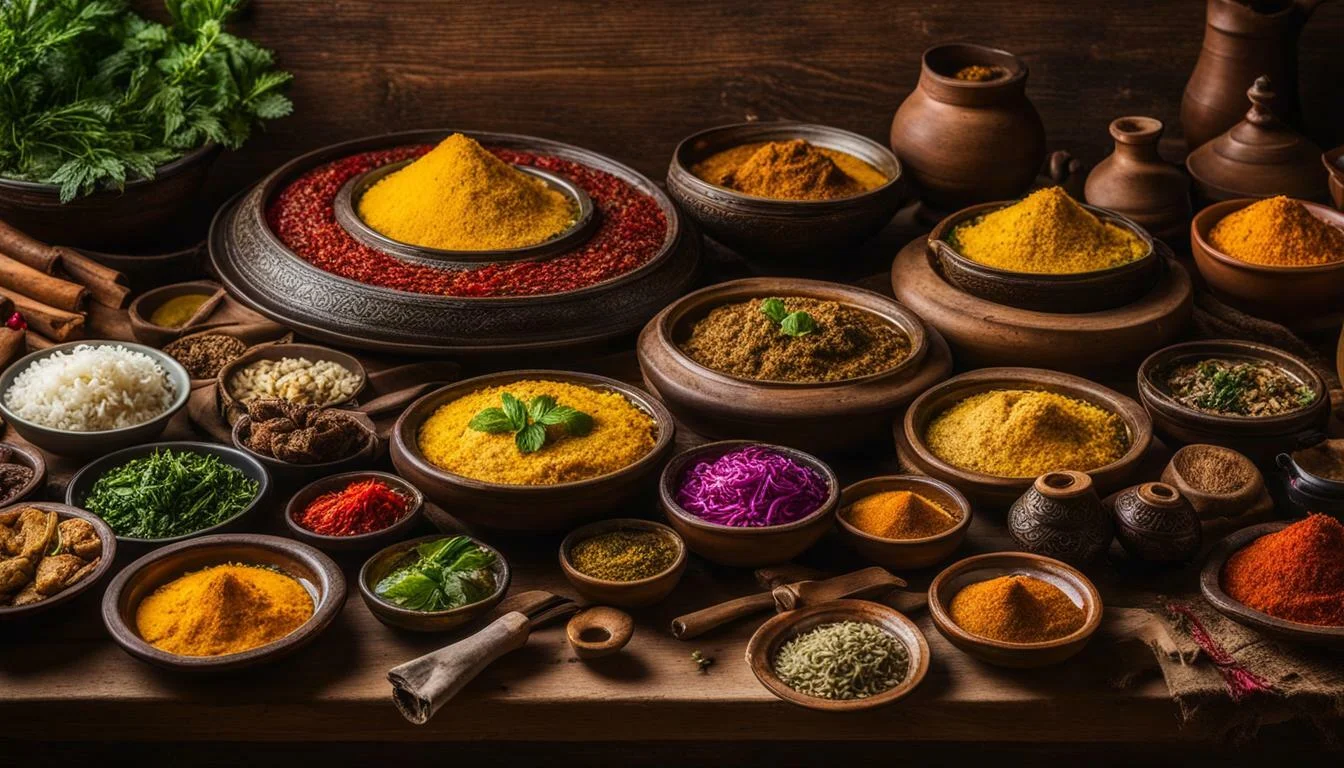Take Me to The Recipes
Are you ready to embark on a journey of flavor and culture? Let’s explore the rich and diverse world of Iraqi cuisine and recipes. From traditional Iraqi dishes to authentic recipes, we will delve into the Middle Eastern cuisine and discover the unique ingredients and spices that make up Iraqi cooking.
For centuries, Iraqi cuisine has been shaped by the influences of Persian, Turkish, and Arabic cultures, resulting in a culinary heritage that is as rich as it is varied. From hearty meat stews to fragrant rice pilafs, each dish reflects the history and traditions of this fascinating country.
Join me as we uncover the secrets of traditional Iraqi spices, explore popular Iraqi dishes, and indulge in delicious Iraqi dessert recipes. Let’s discover the flavors of Iraq together!
Take Me to The Recipes
Iraqi Cuisine – Key Takeaways
- Traditional Iraqi dishes showcase the unique flavors and textures of Middle Eastern cuisine.
- Authentic Iraqi recipes reflect centuries of cultural influences from Arab, Persian, and Turkish traditions.
- Traditional Iraqi spices such as baharat and sumac are essential to enhancing the flavors of dishes.
- Popular Iraqi dishes like Tashreeb and Dolma provide a taste of the country’s rich culinary heritage.
- Indulging in Iraqi dessert recipes like Umm Ali and Baklava is a must for those with a sweet tooth!
Where is Iraq?

Iraq is located in the Middle East and North Africa region and shares borders with Turkey to the north, Iran to the east, Syria and Jordan to the west, and Saudi Arabia and Kuwait to the south.

Index to the Contents
- Take Me to The Recipes
- More Articles
- Interesting Facts About Iraq
- A Glimpse into Iraqi Cuisine History
- How has the Climate and Geography impacted Iraqi Cuisine?
- Understanding the Essence of Iraqi Cuisine
- Iraqi Culinary Traditions
- Iraqi National Dish
- Typical Iraqi Cuisine Recipes
- Exploring Traditional Iraqi Spices
- How Healthy is Iraqi Cuisine?
- Traditional Iraqi Dishes
- Popular Iraqi food dishes
- Tasty Iraqi dishes you can Try at Home
- Conclusion
- FAQ
You may also be interested in the following articles
- North and South American Cuisine – A Culinary Expedition
- Europe Cuisine: Savor the Continent’s Best Culinary Secrets!
- African Cuisine: Discover the Bold Flavors & Global Charm!
- Asian Cuisine Unlock its Secrets – Taste, Health & Global Influence!
Savor iconic Iraqi Recipes – Click on each tantalizing Image to open up the Recipe





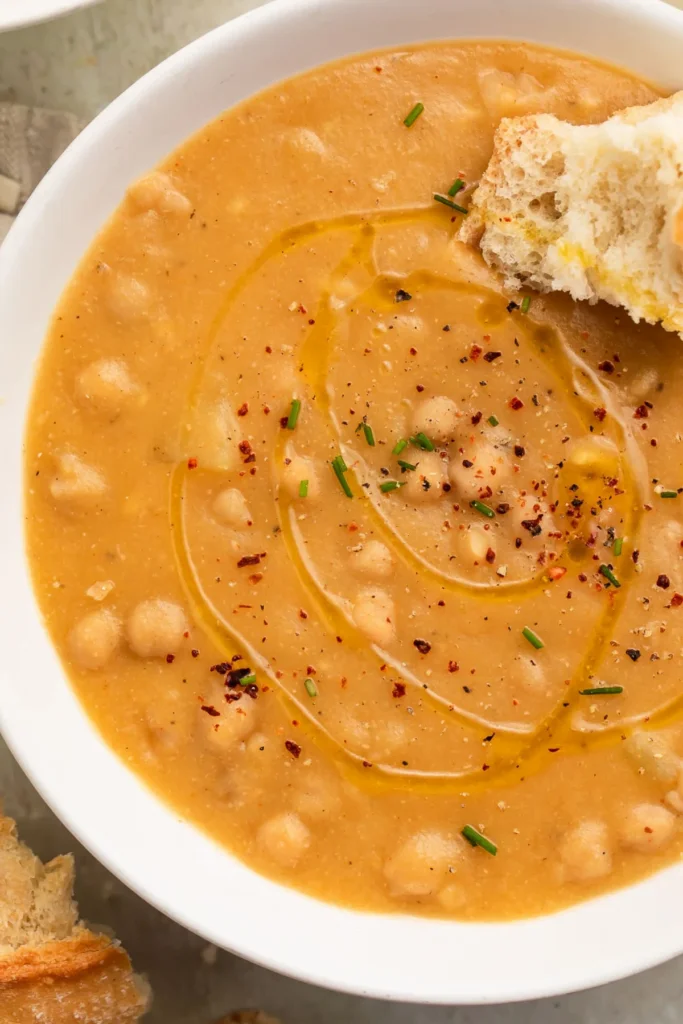
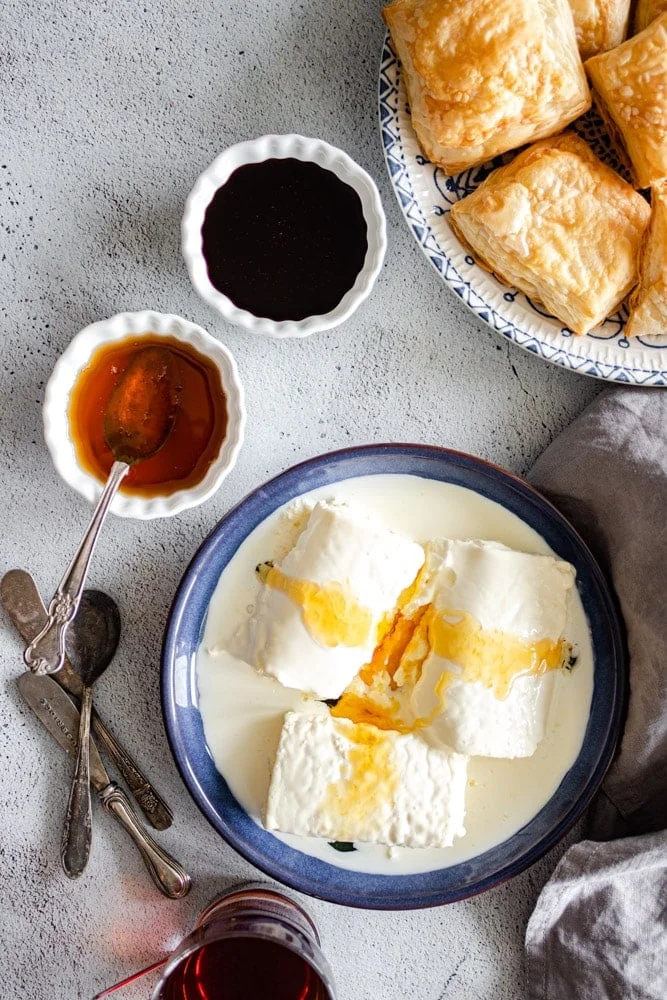
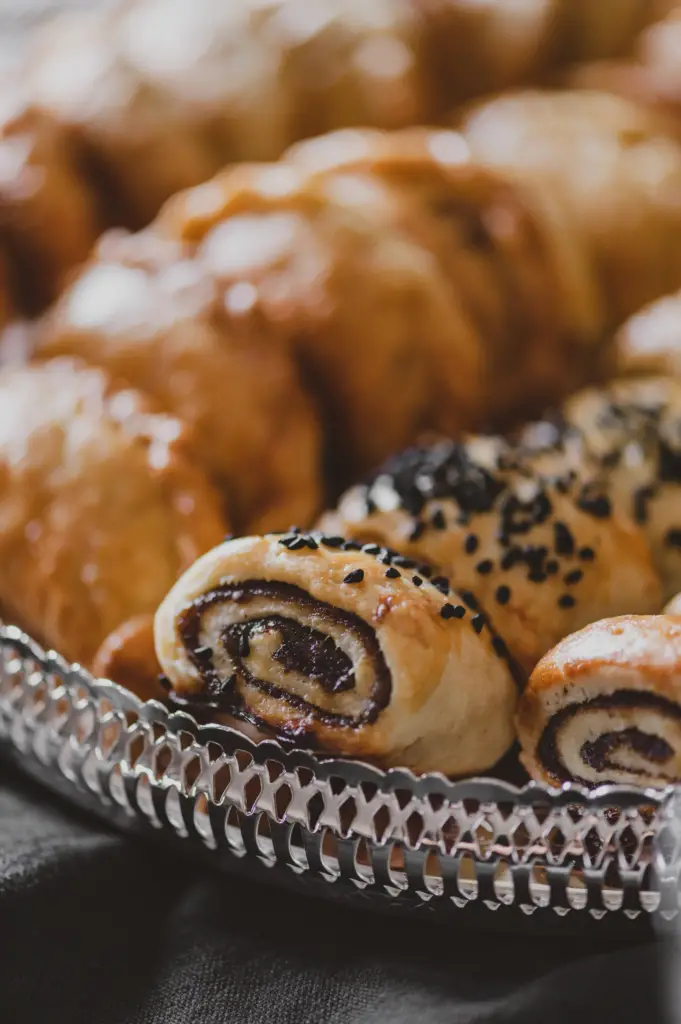

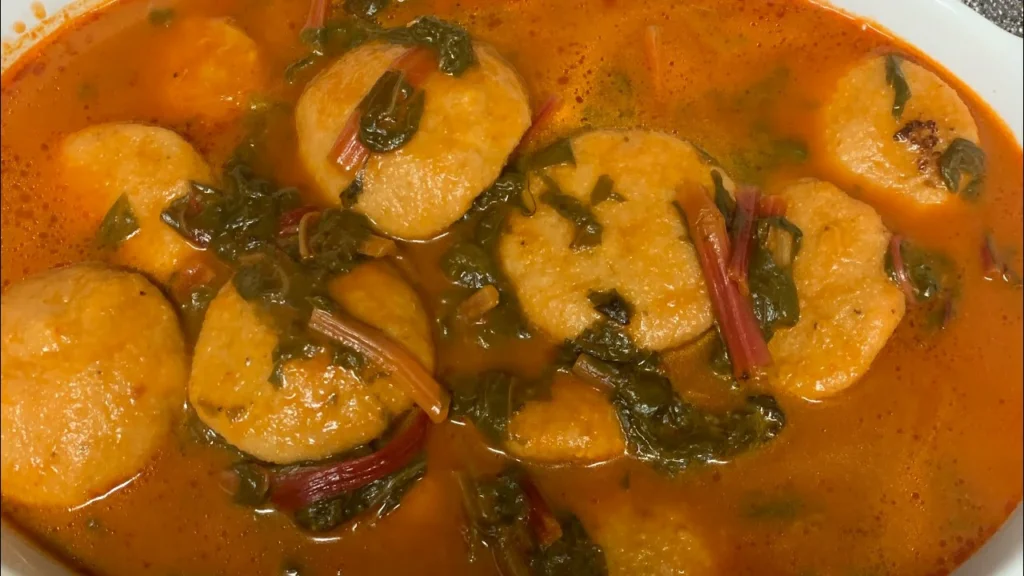


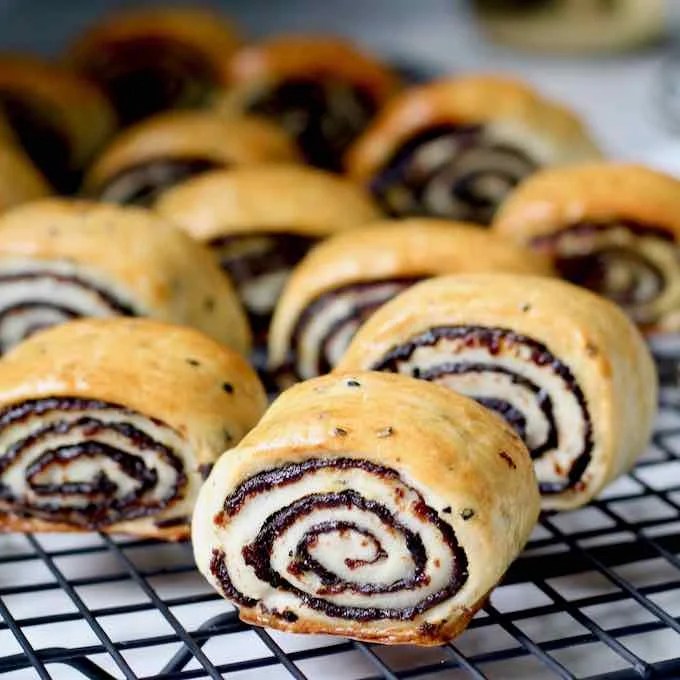

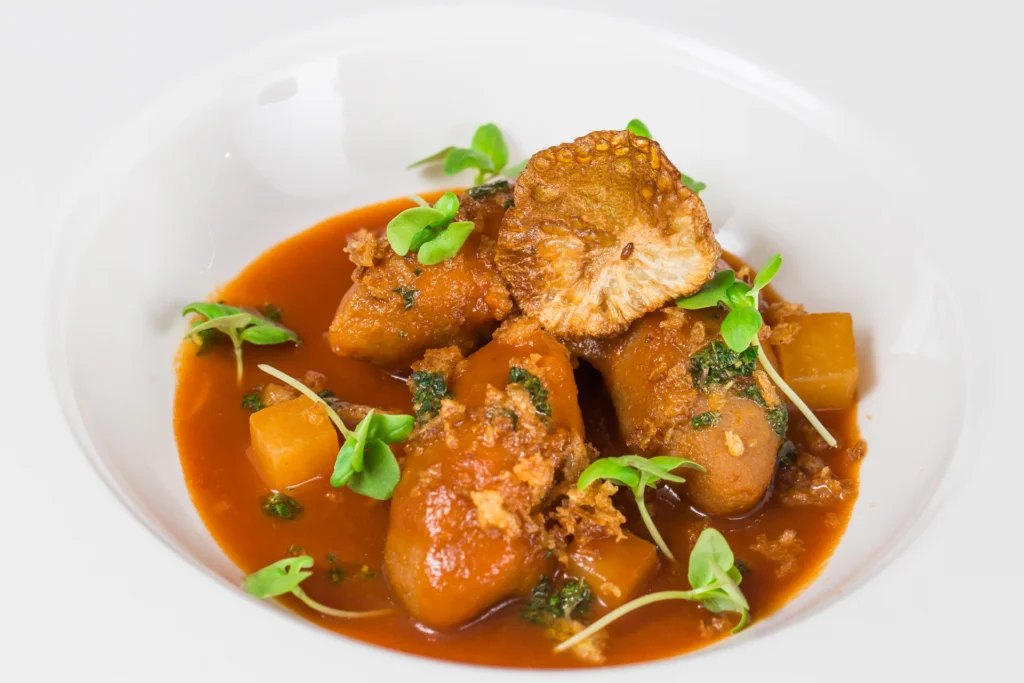

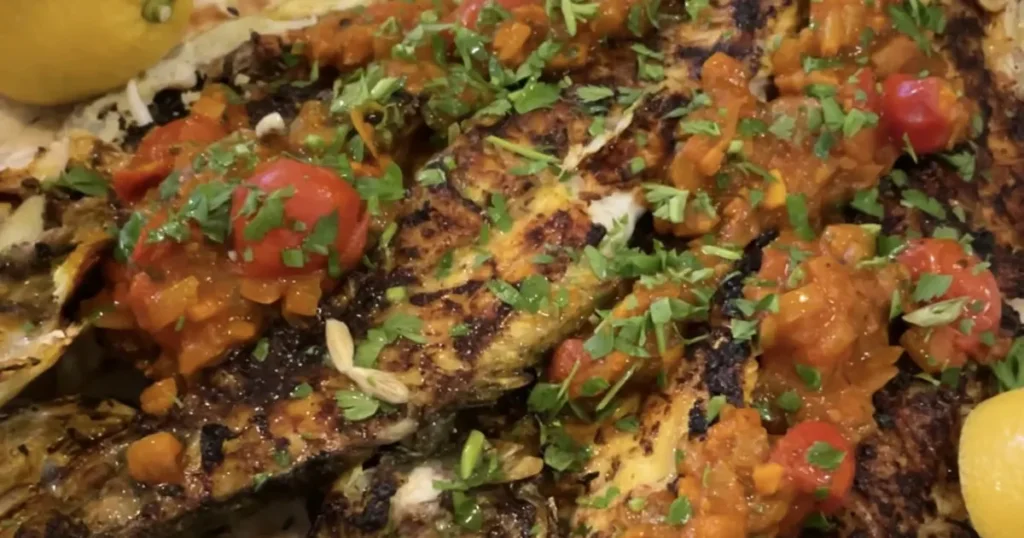



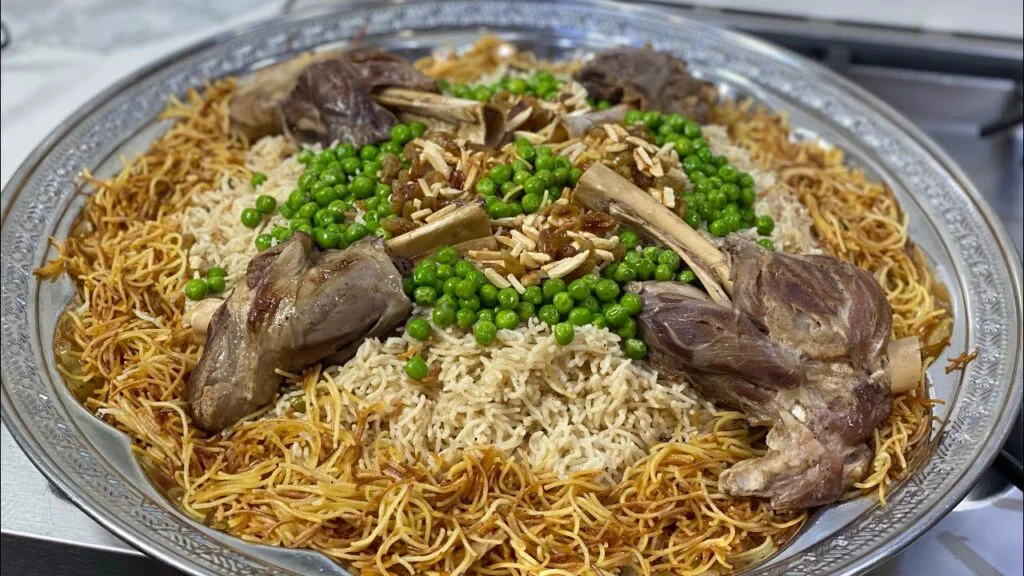
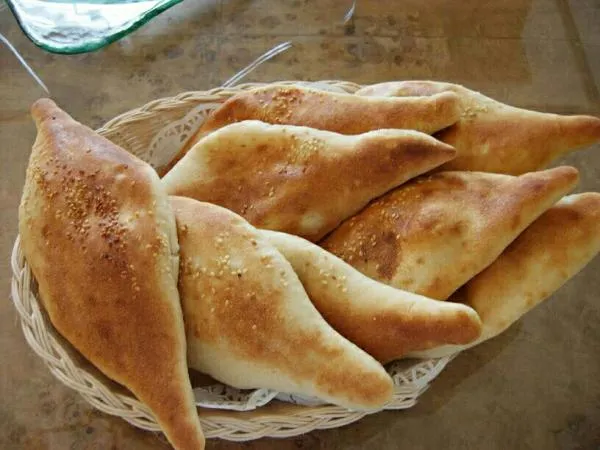
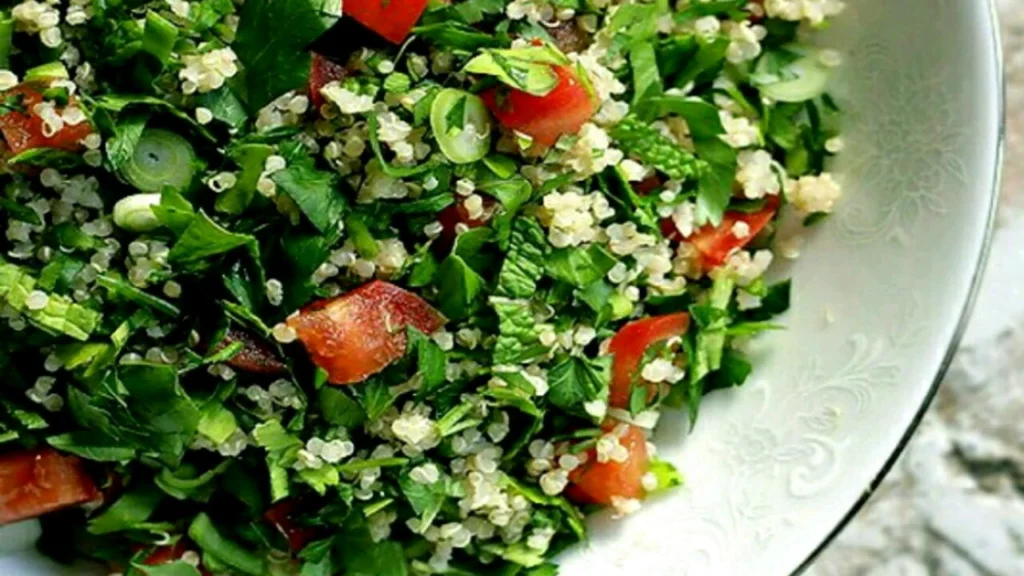


Interesting Facts About Iraq
Ancient Battery?

The Baghdad Battery, an artifact from 2400 BC, bears a striking resemblance to a battery. Theories range from electroplating gold to medical treatments, sparking debate about ancient technology.
World’s First University?

The House of Wisdom in Baghdad, established in the 8th century, housed scholars from various cultures and served as a major center for learning, potentially making it the first true university.
Curious Currency
Saddam Hussein’s regime produced banknotes featuring… himself playing various sports. From soccer to swimming, these notes are now collector’s items.
Honey and Dates Galore
Iraq boasts over 200 kinds of dates, a key ingredient in their cuisine and a major export. Beekeeping also thrives, making honey another sweet staple.
Fish… Out of Water?

In southern Iraq, during the annual “mawsim al-barakah,” thousands of carp (barak) mysteriously appear in receding marshes. The origin of this natural phenomenon remains unknown.
Goodbye, Handshakes?
In some parts of Iraq, a traditional greeting involves placing the right hand on the heart and then raising it slightly towards the head. This gesture signifies respect and honor.
Beware the Evil Eye

The “hamsa” hand symbol is widely displayed in Iraq, believed to ward off misfortune and the “evil eye.” Amulets and charms featuring this symbol are popular choices.
Football Fanatics

Football (soccer) is a national obsession in Iraq. The national team’s 2007 Asian Cup victory sparked jubilant celebrations across the country, highlighting the sport’s unifying power.
The Land of Sinbad?

Basra, a port city in southern Iraq, is considered the birthplace of the legendary sailor Sinbad, whose fantastical voyages are part of “One Thousand and One Nights.”
Board Game Extravaganza

The ancient game of “Royal Game of Ur,” dating back to 3000 BC, was unearthed in Iraq. This complex board game, requiring strategy and skill, offers a glimpse into leisure activities of early civilizations.
These are just a few of the many interesting, funny, and strange facts that paint a more nuanced picture of Iraq beyond the headlines. So, delve deeper and discover the rich cultural tapestry this fascinating country has to offer!
A Glimpse into Iraqi Cuisine History
As I explore the world of Iraq cuisine and recipes, it’s important to understand the history behind this Middle Eastern cuisine. Iraqi cuisine has a rich and fascinating history, shaped by the region’s geography, cultural influences, and agricultural practices.
Here’s a concise overview:
Ancient Mesopotamia
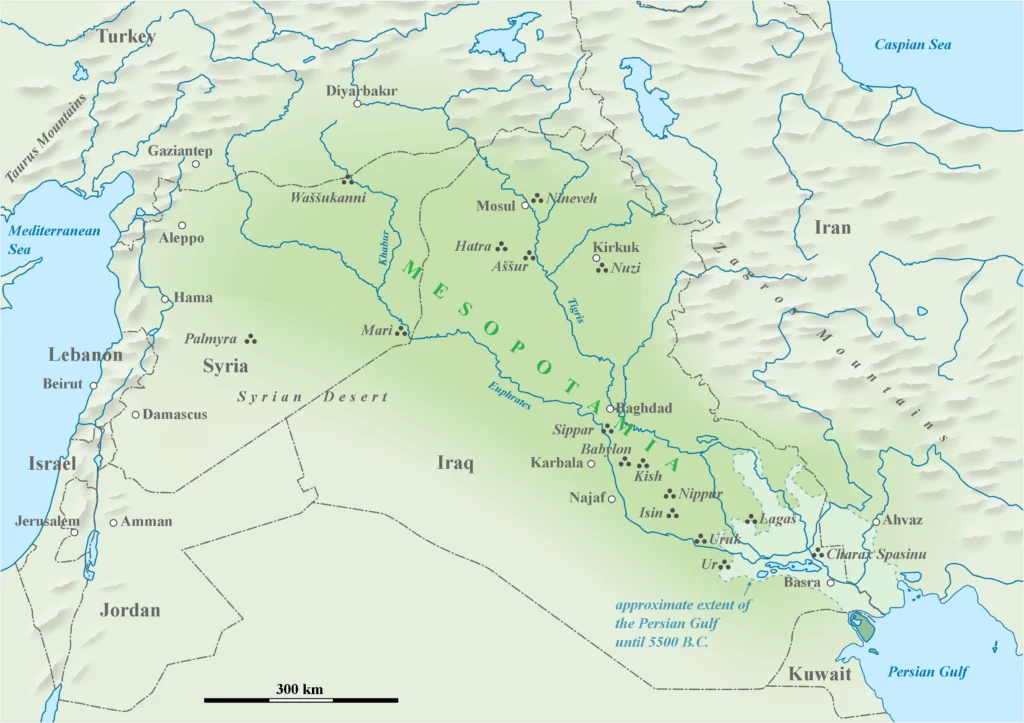
Dates: From the Lower Paleolithic period until the establishment of the Caliphate in the late 7th century AD.
Impact on Cuisine: Mesopotamia, often referred to as the Fertile Crescent, was an important center of early civilization. It witnessed the rise and fall of many cultures and settlements. During this period, the Mesopotamian cuisine laid the foundation for what would become Iraqi cuisine. Key ingredients included grains (such as barley and wheat), legumes, dairy products, and fish. The use of spices and herbs was prevalent.
Islamic Golden Age (Abbasid Caliphate)

Dates: Flourished during the Islamic Golden Age, particularly when Baghdad became the capital of the Abbasid Caliphate.
Impact on Cuisine: This era marked significant culinary advancements. Baghdad was a hub of intellectual and cultural exchange, leading to innovations in cooking techniques, flavor combinations, and food presentation. The first cookbooks in the world were produced in Iraq during this period. Dishes like kebabs gained popularity.
Ottoman Rule

Dates: The Ottoman Empire controlled parts of Iraq from the 16th century until World War I.
Impact on Cuisine: Ottoman influence introduced new ingredients and cooking methods. Spices, dried fruits, and nuts became integral to Iraqi dishes. Pilaf (rice-based dishes) and sweets like baklava were adopted.
British Mandate and Independence

Dates: After World War I, Iraq became a British mandate until gaining independence in 1932.
Impact on Cuisine: British colonial rule left a mark on Iraqi cuisine through the introduction of certain ingredients (such as tea) and culinary practices. However, traditional Iraqi dishes remained resilient.
Modern Iraq

Dates: Post-independence era to the present day.
Impact on Cuisine: Modern Iraqi cuisine reflects a blend of historical influences. Staple foods include rice, flatbreads, lamb, and vegetables. Spices like cumin, coriander, and turmeric are commonly used. Traditional dishes like dolma (stuffed grape leaves), kubba (meat-filled dumplings), and masgouf (grilled fish) continue to be cherished.
Allied Forces Occupation (Post-Desert Storm War)

Dates: After the Gulf War (1990-1991), Iraq faced a period of occupation by Allied forces.
Impact on Cuisine: The occupation disrupted daily life, including food production and distribution. However, Iraqi culinary heritage persisted, albeit with challenges. During this time, some ingredients may have been scarce, but the resilience of Iraqi cooks ensured that traditional flavors endured.
Iraqi cuisine is a tapestry woven from centuries of history, cultural exchanges, and survival. From ancient grains to modern-day kebabs, it continues to evolve while honoring its roots.
Iraq’s Culinary Canvas: Where Land and Climate Paint the Flavors
Iraq’s rich and diverse cuisine is much like its landscape – a tapestry woven from ancient traditions, diverse cultures, and the unique interplay of climate and geography. Let’s explore how these elements have shaped the food Iraqis enjoy today:
Scorching Sun, Fertile Soil

Land of Two Rivers: The Tigris and Euphrates rivers have nourished Mesopotamia for millennia, providing fertile land for crops like wheat, barley, and dates, which form the foundation of Iraqi cuisine. Dishes like dolma (stuffed grape leaves) and kibbeh (meat or bulgur wheat patties) showcase the versatility of these staples.
Land of Extremes: Iraq experiences scorching summers and cool winters. This dramatic temperature shift influences food preservation methods. Drying, salting, and pickling are widely used to extend the shelf life of meat, fish, and vegetables, evident in dishes like pastırma (air-dried beef) and mhallamiya (pickled vegetables).
Mountains, Plains, and Culinary Diversity

North to South, Flavor Shifts: Iraq’s diverse geography offers regional specialties. The mountainous north, with its cooler climate, is known for dishes like quzi (lamb with rice and nuts) and kashk (fermented yogurt sauce). The southern plains, influenced by the Persian Gulf, feature seafood dishes like masgouf (grilled fish) and bamya (okra stew with fish).
Spice Routes and Cultural Blends: Iraq’s historic position on the spice routes brought influences from India, Persia, and the Mediterranean. Spices like turmeric, cumin, and cinnamon add depth and complexity to dishes, while techniques like slow-cooking and layering flavors are evident in stews like qima (meat and tomato stew).
Beyond the Plate
Communal Feasts and Hospitality: Sharing meals is deeply ingrained in Iraqi culture. Kibbeh trays, platters overflowing with various dishes, are a symbol of generosity and community. Coffee brewing rituals hold social significance, fostering conversation and connection.
References:
- Marks, Gil. Encyclopedia of Jewish Food. Hoboken, NJ: John Wiley & Sons, 2010.
- Perry, Charles. Mediterrean Food. London: Reaktion Books, 2017.
- Food: A Cultural Culinary History Course Guidebook Professor Ken Albala
- Iraqi Ministry of Culture.
Understanding the Essence of Iraqi Cuisine
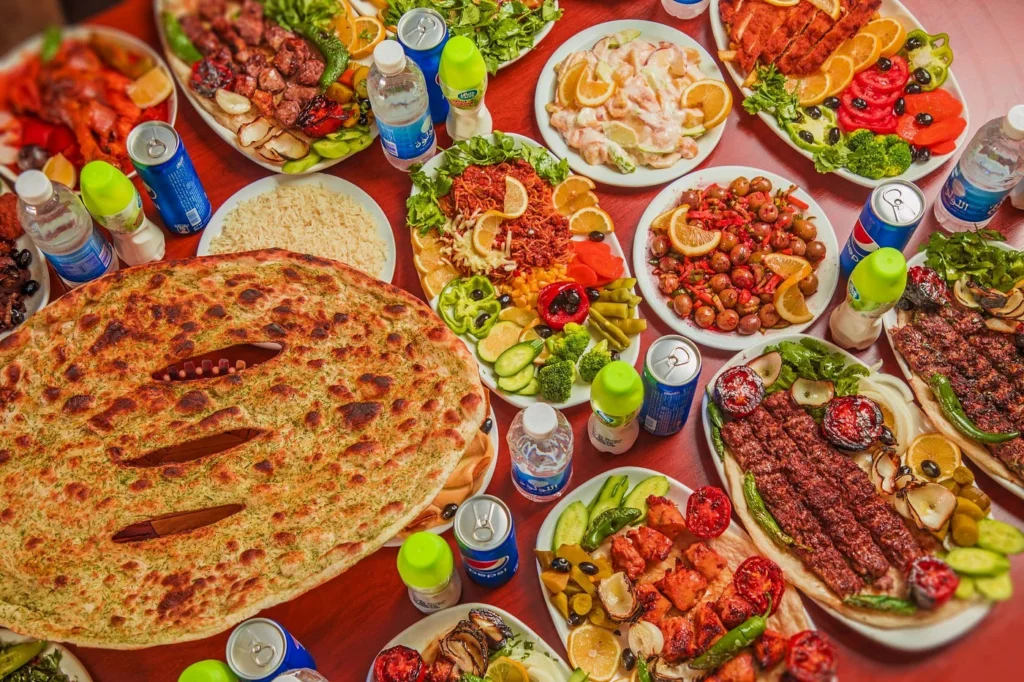
Iraq, often referred to as the cradle of civilization, boasts a culinary heritage as ancient as the Tigris and Euphrates rivers that nourish its lands. Understanding the essence of Iraqi cuisine requires a journey through time, delving into millennia-old traditions, and appreciating the confluence of diverse cultures.
Central to Iraqi cuisine is rice, specifically the ‘timman’ variety, grown abundantly in the marshy regions. One cannot speak of Iraqi meals without mentioning ‘biryani’, a fragrant rice dish adorned with meats, raisins, and almonds, carrying with it tales of Indian and Persian influences.
Equally iconic is ‘masgouf’, a river fish dish. The fish, typically carp, is butterflied and seasoned, then traditionally roasted over an open flame, signifying the Iraqis’ enduring relationship with the rivers and their bounty.
Iraq’s position on the ancient Silk Road meant it became a melting pot of flavors. Spices like cardamom, saffron, and sumac were introduced, enriching dishes and making them vibrant tapestries of taste. Dolma, grape leaves stuffed with a mixture of meat and rice, showcases the harmonious blend of these influences.
Yet, Iraqi cuisine isn’t just about the grand feasts. It’s also about the everyday staples like ‘samoon’, a diamond-shaped bread, and ‘kleicha’, date-filled cookies traditionally prepared for Nowruz, the Persian New Year.
Beyond the dishes and flavors, the essence of Iraqi cuisine is steeped in hospitality. Sharing a meal in an Iraqi household is an experience of warmth, generosity, and deep-rooted traditions. Meals are an occasion, a time for family, reflection, and gratitude.
To truly understand Iraqi cuisine is to embrace its rich history, its symphony of flavors, and the heartwarming ethos of its people. In every bite, there’s a story, a testament to Iraq’s resilient spirit and its timeless culinary legacy.
Iraqi Culinary Traditions
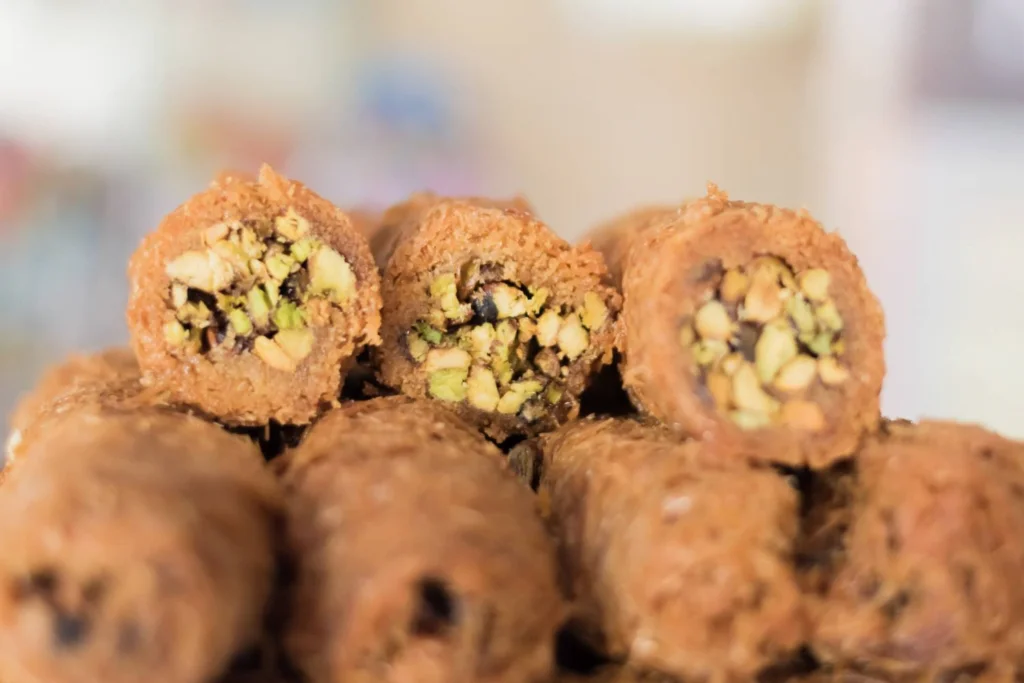
Nestled between the Tigris and Euphrates rivers, Iraq’s gastronomic heritage offers a delectable window into its storied past. Iraqi culinary traditions, nurtured over millennia, are a vibrant blend of indigenous practices and external influences, each dish echoing tales of conquests, trade, and communal gatherings.
A cornerstone of these traditions is the communal ‘quzi’. This lavish dish, prepared during celebrations, features slow-cooked lamb stuffed with rice, nuts, and raisins, embodying the spirit of togetherness and festivity. Served on large communal platters, ‘quzi’ exemplifies the Iraqi ethos of sharing and generosity.
The art of bread-making, an ancient practice, remains vital in Iraq. From the ubiquitous ‘samoon’ to the thin ‘lavash’, bread accompanies nearly every meal, serving as a utensil, a filler, and a symbol of sustenance. The act of baking, often done in communal ovens, underscores the sense of community that’s integral to Iraqi culture.
Another cherished tradition is the morning ritual around ‘gaymer’, a rich clotted cream served with honey or date syrup atop fresh bread. This simple yet decadent breakfast captures the essence of Iraqi mornings – slow, cherished, and deeply rooted in tradition.
The preparation of ‘dolma’, involving meticulous stuffing of vegetables with rice and meat, is more than just a culinary technique. It’s a rite, often involving multiple family members, each playing a role, from scooping out vegetables to simmering the pot to perfection.
Tea, or ‘chai’, holds ceremonial importance. Often infused with cardamom, it’s a gesture of hospitality, signaling warmth, welcome, and camaraderie.
In essence, Iraqi culinary traditions are not mere recipes but narratives of a resilient nation. They speak of Iraq’s abundant landscapes, its interactions with neighboring cultures, and above all, the heartwarming generosity that permeates every Iraqi household.
Iraqi National Dish

The Iraqi national dish, known as “Masgouf,” is a culinary treasure that satisfies the taste buds of locals and visitors alike.
This delectable dish is a harmonious fusion of rice and succulent meat, typically lamb or chicken, cooked with aromatic spices such as cinnamon, cardamom, and saffron. The result is a flavorful and fragrant masterpiece that showcases the rich culinary heritage of Iraq.
Whether enjoyed at home with family or savored at a local restaurant, the Iraqi national dish is a source of great pride and a symbol of the country’s vibrant food culture.
Kebab Masgouf is also a popular Iraqi dish that some claim is the Iraqi national dish. It is a grilled fish dish, usually made with freshwater fish like carp or catfish.
The fish is marinated in a mixture of spices, then grilled over an open flame. Kebab Masgouf is often served with rice and a tangy tomato sauce.
How Healthy is Iraqi Cuisine?
Iraqi cuisine is not only delicious but also offers health benefits due to its use of wholesome ingredients and traditional preparation methods. Let’s explore the health aspects of Iraqi cuisine:
Traditional Fermented Foods and Beverages
- History: The tradition of making fermented foods and beverages in Iraq dates back to 7500 BC. These include milk, vegetable, and fruit-based products.
- Health Benefits: Traditional fermented foods are rich in probiotics and bioactive compounds. They contribute to gut health and overall well-being.
- Safety: The back-slopping technique used in production ensures safety and maintains organoleptic properties.
Nutrient-Rich Ingredients
- Nuts and Seeds: Iraqi cuisine incorporates nuts like sesame, pistachios, almonds, and walnuts. These provide healthy fats, protein, and vitamins.
- Olive Oil: A staple in Mediterranean diets, olive oil is heart-healthy and anti-inflammatory.
- Dates and Date Syrup: Dates are a natural sweetener rich in fiber, vitamins, and minerals.
- Yogurt: Commonly used in savory and sweet dishes, yogurt provides probiotics and calcium.
Herbs and Spices
- Mint, parsley, and other herbs are abundant in Iraqi cuisine. They add flavor without excess salt or fat.
- Turmeric, cumin, and coriander are anti-inflammatory and antioxidant-rich.
Balanced Meals
- Iraqi meals often feature a combination of grains, vegetables, and lean meats.
- Kubba (meat-filled dumplings) and dolma (stuffed grape leaves) provide a balance of nutrients.
Cultural Heritage
- Traditional foods connect people to their roots and cultural identity.
- Tabbouleh, a refreshing salad with tomatoes, parsley, mint, and bulgur wheat, exemplifies healthy Iraqi cuisine.
In summary, Iraqi cuisine emphasizes whole foods, probiotics, and a variety of flavors. It’s a testament to the wisdom of ancient culinary practices that continue to benefit health today. 🌿🥗
References
- Belal J. Muhialdin, Viachaslau Filimonau, Jamal M. Qasem, Salam A. Ibrahim, Hussein L. Algboory. “Traditional fermented foods and beverages in Iraq and their potential for large-scale commercialization.” Journal of Ethnic Foods, 2022
- “How about cooking Iraqi?” The Guardian, 2009
- “20 Traditional Iraqi Foods in Iraq to Try.” Nomads Unveiled, 2023
- “Iraqi cuisine.” Wikipedia
Traditional Iraqi Dishes

Iraqi cuisine is rich and diverse, with a long history influenced by various cultures. Here are five traditional Iraqi dishes:
Dolma (Yaprak)
Description: Dolma consists of grape leaves stuffed with a mixture of rice, ground meat (often lamb), and a blend of herbs and spices. The filled grape leaves are then cooked until tender.
Serving Style: Often served with yogurt or a side of tahini sauce.
Tashreeb
Description: Tashreeb is a hearty and flavorful dish featuring pieces of lamb or chicken cooked with Iraqi flatbread, vegetables, and a savory broth. The bread soaks up the broth, creating a delicious and comforting meal.
Serving Style: Tashreeb is typically presented in a communal dish, with the bread serving as a base for the meat and vegetables.
Quzi
Description: Quzi is a festive and traditional Iraqi dish made with slow-cooked lamb or chicken, rice, and a blend of aromatic spices. It is often garnished with roasted nuts and served during special occasions and celebrations.
Serving Style: Quzi is presented on a large platter, showcasing the beautifully cooked meat and fragrant rice.
Masgouf
Description: Masgouf is a famous Iraqi fish dish, traditionally prepared with carp. The fish is split open, marinated with a tangy tamarind sauce, and then slow cooked on an open flame or grill.
Serving Style: Masgouf is usually served with rice, grilled vegetables, and a side of lime for added flavor.
Kubba
Description: Kubba refers to a variety of Iraqi dishes featuring dumplings made from bulgur or rice stuffed with minced meat, onions, and aromatic spices. There are different types of kubba, such as Kubba Halab (round dumplings) and Kubba Bamia (dumplings with okra).
Serving Style: Kubba can be served as a side dish or as the main course, often accompanied by yogurt or a dipping sauce.
These traditional Iraqi dishes showcase the diverse flavors and culinary techniques that contribute to the country’s vibrant gastronomy.
Typical Iraqi Cuisine Recipes
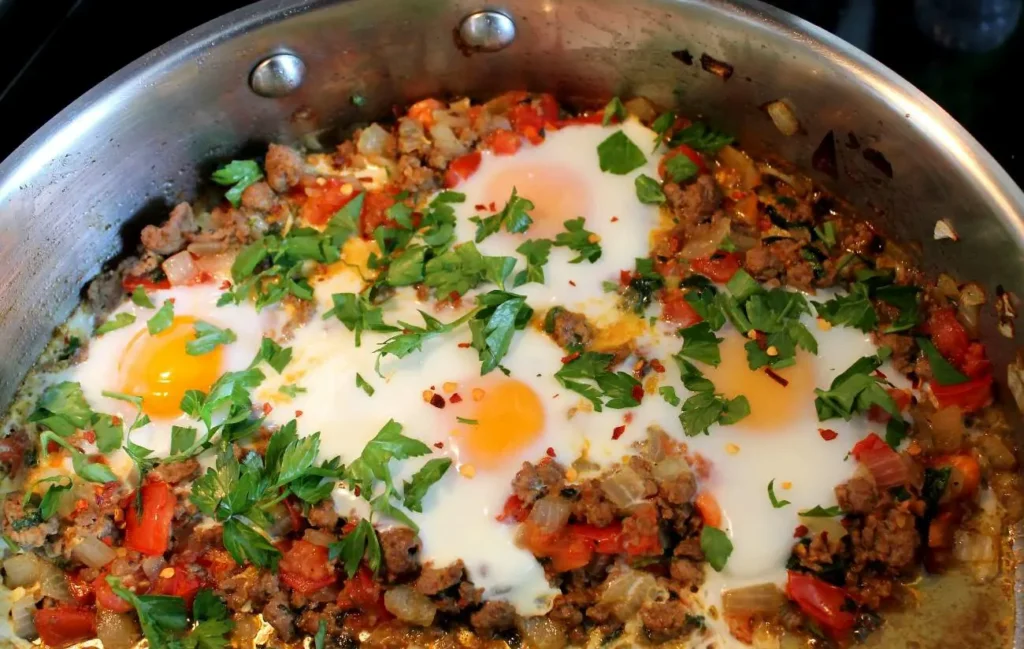
Iraqi cuisine recipes are known for their rich flavors and unique combinations of spices. The traditional Iraqi dishes are influenced by various cultures, including Persian, Turkish, and Arab cuisines.
Popular dishes include the fragrant rice dish known as biryani, the flavorful lamb stew called kubba, and the savory chickpea soup known as falafel. Iraqi cuisine recipes often feature ingredients like lamb, rice, chickpeas, and various herbs and spices such as cumin, coriander, and cinnamon.
The Iraqi cuisine is a delightful blend of flavors that will transport anyone’s taste buds to the vibrant streets of Iraq.
Exploring Traditional Iraqi Spices

Spices are the heart and soul of Iraqi cuisine, bringing a unique depth and flavor to every dish. The traditional use of spices in Iraqi cooking dates back to ancient times, when the spice trade flourished in the region. Today, Iraqi food is known for its bold, aromatic flavors, and the use of these spices is a key factor.
One of the most popular spice blends used in Iraqi cuisine is baharat. This fragrant blend is made up of spices like cinnamon, cloves, nutmeg, and cumin, and adds a warm, aromatic flavor to meat dishes and stews. Another essential spice in Iraqi cooking is sumac, which has a tangy, citrusy flavor and is used to add a sour note to dishes like salads and grilled meats.
Other traditional spices used in Iraqi cuisine include cumin, coriander, cardamom, and turmeric. These spices can be used on their own or in combination with other spices to create unique flavor profiles. For example, a blend of cumin, coriander, and turmeric is flavors dishes like lentil soup and chicken biryani.
| Spice | Flavor Profile | Main Use |
|---|---|---|
| Baharat | Fragrant, warm, and earthy | Meat dishes, stews |
| Sumac | Tangy, citrusy, and slightly sour | Salads, grilled meats |
| Cumin | Earthy, nutty, and slightly bitter | Lentil soup, chicken biryani |
| Coriander | Light, citrusy, and slightly sweet | Couscous, meat dishes |
| Cardamom | Warm, spicy, and floral | Tea, cakes, and sweets |
| Turmeric | Earthy, slightly bitter, and pungent | Rice dishes, curries, and soups |
Whether you’re a fan of bold and aromatic flavors or prefer a lighter, citrusy flavor, there’s a spice for every taste in Iraqi cuisine. Incorporating traditional Iraqi spices into your cooking is a great way to explore the rich history and culture.
Popular Iraqi food dishes
When it comes to traditional Iraqi food dishes, there is no shortage of options to choose from. From the savory to the sweet, Iraqi cuisine offers a wide range of flavors and textures to tantalize your taste buds. Here are some of the most popular Iraqi food dishes that you must try:
| Iraqi food dishes | Description |
|---|---|
| Tashreeb | A hearty soup made with lamb or chicken, vegetables, and chunks of bread. This dish is a staple in Iraqi cuisine and is perfect for a cold winter day. |
| Dolma | A vegetarian dish consisting of stuffed vegetables with a mixture of rice, herbs, and spices. Dolma can be made with grape leaves, eggplant, or zucchini, and is typically served cold. |
| Kubba | A deep-fried snack made from bulgur wheat and stuffed with either meat or vegetables. Kubba is crispy on the outside and soft on the inside, making it a popular snack or appetizer. |
| Masgouf | A grilled fish dish that is marinated in spices and served with lemon and onions. Masgouf is a signature dish of Iraqi cuisine and is often made with freshwater carp or salmon. |
| Biryani | A rice dish made with meat, vegetables, and fragrant spices such as cardamom and saffron. Biryani is a popular dish throughout the Middle East and South Asia, and the Iraqi version is known for its rich flavors and tender meat. |
Tasty Iraqi dishes you can Try at Home
While Iraq’s landscapes and history play a significant role in shaping its cuisine, the true magic lies in the flavors and techniques that make every dish special.
And the good news? You don’t have to travel to Iraq to experience its culinary delights! You can easily recreate any traditional Iraqi recipes in your own kitchen.
With a handful of authentic ingredients and a sprinkle of love, you can embark on a delightful gastronomic journey, right from the comfort of your home. Dive into the following recipes and let your taste buds explore Iraqi cuisine.
Iraqi Food – Samoon

Samoon: A Flavorful Iraqi Bread Delight
Hello, food enthusiasts! Today, we’re diving into the heart of Iraqi cuisine with a staple that graces every table – Samoon. Originating from the rich culinary heritage of Iraq, Samoon is a delectable bread that has stood the test of time.
Its unique texture and taste make it a beloved accompaniment to various dishes. Join me as we explore the history, embrace the cultural background, and learn how to bake this delightful Samoon bread in your own kitchen.
History and Background
Samoon, also known as Iraqi Samoon, holds a special place in Iraqi cuisine. Its origins trace back to the country’s long history, where it became an integral part of daily meals.
This soft, round bread is often enjoyed with traditional Iraqi dishes, acting as the perfect vessel for soaking up flavorful stews and dips. The love for Samoon has transcended generations, making it a cherished symbol of Iraqi culinary traditions.
Iraqi Food – Samoon Ingredients
For Samoon Bread:
- 4 cups all-purpose flour
- 1 tablespoon sugar
- 1 tablespoon active dry yeast
- 1 teaspoon salt
- 2 tablespoons olive oil
- 1 1/2 cups warm water
Iraqi Food – Samoon Recipe
Making Samoon Bread:
- Activating the Yeast:
- In a bowl, mix warm water and sugar. Add yeast, stir, and let it sit for 5-10 minutes until it becomes frothy.
- Preparing the Dough:
- In a large mixing bowl, combine flour and salt. Make a well in the center and pour in the activated yeast mixture and olive oil.
- Kneading the Dough:
- Knead the dough for about 8-10 minutes until it becomes smooth and elastic. If needed, add more flour to prevent sticking.
- Rising Time:
- Place the dough in a lightly oiled bowl, cover it with a damp cloth, and let it rise in a warm place for 1-2 hours or until it doubles in size.
- Shaping the Samoon:
- Punch down the risen dough and divide it into equal portions. Shape each portion into a round ball.
- Flattening and Resting:
- Flatten each ball into a round disk, about 1/2 inch thick. Place the flattened dough on a baking sheet, cover, and let it rest for 15-20 minutes.
- Baking:
- Preheat your oven to 400°F (200°C). Bake the Samoon for 15-20 minutes or until golden brown.
- Cooling and Serving:
- Allow the Samoon to cool on a wire rack. Serve it warm with your favorite Iraqi dishes or use it as a versatile bread for sandwiches.
Serving Information
- Servings: 8-10 pieces
- Cooking Time: Approximately 1.5 hours (including rising time and baking)
- Calories: Approximately 150 calories per Samoon bread
- Nutritional Information: Samoon bread provides a good source of carbohydrates and a delightful texture that complements a variety of dishes. Enjoy the warm, homemade goodness with your family and friends!
Iraqi Food – Kleicha

Kleicha: An Iraqi Delicacy with a Sweet Legacy
Hey, fellow food enthusiasts! Today, we’re delving into the sweet side of Iraqi cuisine with the delightful Kleicha. This pastry has a history as rich as its flavor. Originating from the heart of Iraq, Kleicha holds a special place in Iraqi households, especially during festive occasions and family gatherings.
Join me as we uncover the cultural background, gather the ingredients, and embark on a baking adventure to create these delectable Iraqi sweets in your own kitchen.
History and Background
Kleicha has been a symbol of joy and celebration in Iraqi culture for centuries. Its origins can be traced back to the ancient city of Baghdad. Traditionally made during festive seasons like Eid, Kleicha comes in various shapes and fillings, showcasing the creativity and warmth of Iraqi hospitality.
The sweet aroma of freshly baked Kleicha wafting through homes is a cherished memory for many.
Iraqi Food – Kleicha Ingredients
Kleicha Dough:
- 4 cups all-purpose flour
- 1 cup unsalted butter, melted
- 1 cup sugar
- 1 cup warm milk
- 1 tablespoon active dry yeast
- 1 teaspoon ground cardamom
- 1/2 teaspoon salt
Date Filling:
- 2 cups pitted dates, finely chopped
- 1/2 cup unsalted butter
- 1 teaspoon ground cinnamon
Walnut Filling:
- 1 1/2 cups walnuts, finely chopped
- 1/2 cup sugar
- 1/2 teaspoon ground cinnamon
Iraqi Food – Kleicha Recipe
Making Kleicha:
- Activating the Yeast:
- In a bowl, combine warm milk and sugar. Add yeast, stir, and let it sit for 5-10 minutes until frothy.
- Preparing the Dough:
- In a large mixing bowl, combine flour, melted butter, activated yeast mixture, ground cardamom, and salt. Knead until a soft dough forms.
- Dividing the Dough:
- Divide the dough into two equal portions. One portion will be for the date filling, and the other for the walnut filling.
- Making Date Filling:
- In a pan, melt butter and add chopped dates and ground cinnamon. Cook until the dates soften and the mixture thickens. Allow it to cool.
- Making Walnut Filling:
- Combine finely chopped walnuts, sugar, and ground cinnamon. Mix well to create the walnut filling.
- Assembling Kleicha:
- Roll out each portion of the dough into a rectangle. Spread the date filling on one half and the walnut filling on the other half. Roll each portion into a log.
- Shaping Kleicha:
- Cut the rolled dough into small pieces and shape them into rings, pinwheels, or cylinders.
- Baking:
- Preheat your oven to 350°F (175°C). Place the shaped Kleicha on a baking sheet and bake for 15-20 minutes or until golden brown.
- Cooling and Serving:
- Allow the Kleicha to cool on a wire rack. Serve these delightful pastries with a cup of tea or coffee.
Serving Information
- Servings: Approximately 20 pieces
- Cooking Time: Approximately 30 minutes (excluding cooling time)
- Calories: Approximately 150 calories per Kleicha
- Nutritional Information: Kleicha offers a sweet indulgence, blending the rich flavors of dates and walnuts with a buttery, golden crust. Share these treats with loved ones and celebrate the sweetness of Iraqi traditions!
Iraqi Food – Quzi (لذيذ ترين غذاي عراقي)

Quzi (لذيذ ترين غذاي عراقي): Discovering the Flavorful Iraqi Delight
Hello, food enthusiasts! Today, let’s embark on a culinary journey to the heart of Iraq with a dish that defines the essence of Iraqi hospitality – Quzi. This delectable dish has deep roots in Iraqi culture, often gracing tables during festive gatherings and special occasions.
Its rich history and aromatic blend of spices make it a favorite among locals and a must-try for anyone exploring Iraqi cuisine. Join me as we delve into the background, gather the ingredients, and cook up a tantalizing pot of Quzi right in your own kitchen.
History and Background
Quzi holds a special place in Iraqi traditions, originating from the Mesopotamian region. With a history dating back centuries, this dish has been perfected over generations, showcasing the culinary expertise of Iraqi cooks.
Typically served during celebrations like weddings and religious festivals, Quzi reflects the warmth and communal spirit of Iraqi culture.
Iraqi Food – Quzi (لذيذ ترين غذاي عراقي) Ingredients
Lamb and Marinade:
- 2 pounds lamb shoulder, cubed
- 1 cup plain yogurt
- 2 tablespoons olive oil
- 1 tablespoon tomato paste
- 1 teaspoon ground cinnamon
- 1 teaspoon ground coriander
- 1 teaspoon ground cumin
- Salt and black pepper to taste
Rice:
- 2 cups basmati rice, rinsed and soaked
- 4 cups lamb or vegetable broth
- 1/2 cup ghee (clarified butter)
Garnish:
- 1/2 cup slivered almonds, toasted
- 1/2 cup pine nuts, toasted
- Fresh parsley, chopped
Iraqi Food – Quzi (لذيذ ترين غذاي عراقي) Recipe
Marinating and Cooking the Lamb:
- Marinating the Lamb:
- In a bowl, mix cubed lamb with yogurt, olive oil, tomato paste, ground cinnamon, ground coriander, ground cumin, salt, and black pepper. Marinate for at least 2 hours or overnight in the refrigerator.
- Slow Cooking the Lamb:
- Preheat the oven to 325°F (163°C). Transfer the marinated lamb to a baking dish, cover with foil, and slow-cook for 2-3 hours until tender.
Preparing the Rice:
- Cooking the Rice:
- Bring lamb or vegetable broth to a boil. Add soaked basmati rice and cook until 70% done. Drain any excess liquid.
- Layering Rice and Lamb:
- In a larger pot, layer partially cooked rice over the slow-cooked lamb. Drizzle ghee over the rice layers.
Final Assembly and Garnish:
- Finishing in the Oven:
- Cover the pot with a tight-fitting lid or foil. Bake at 350°F (177°C) for 30-40 minutes until the rice is fully cooked and has a golden crust.
- Toasting Nuts and Garnishing:
- Toast slivered almonds and pine nuts in a pan until golden. Garnish the Quzi with toasted nuts and fresh parsley.
Serving Information
- Servings: 6-8 people
- Cooking Time: Approximately 4-5 hours (including marinating and baking)
- Calories: Approximately 500 calories per serving
- Nutritional Information: Quzi offers a balanced mix of protein, carbohydrates, and essential nutrients. Enjoy this flavorful Iraqi dish with loved ones, creating unforgettable moments around the dinner table!
Iraqi Food – Gaymer

Gaymer: An Iraqi Comfort Food Delight
Hello, foodies! Today, we’re diving into the heart of Iraqi cuisine with a comforting dish called Gaymer. Originating from the ancient land of Mesopotamia, Gaymer holds a special place in the culinary tapestry of Iraq.
This soul-soothing recipe has been passed down through generations, offering a taste of tradition and a glimpse into the rich history of Iraqi home cooking. Join me as we explore the background, gather our ingredients, and create a warm and delicious pot of Gaymer right in your own kitchen.
History and Background
Gaymer, also known as Qeema, is a beloved Iraqi dish that traces its roots to the Mesopotamian region. This flavorful comfort food has been a staple in Iraqi households for centuries, representing the heart and soul of family gatherings.
Traditionally made with ground meat, aromatic spices, and wholesome vegetables, Gaymer reflects the warmth and generosity of Iraqi hospitality.
Iraqi Food – Gaymer Ingredients
Qeema (Ground Meat Mixture):
- 1 pound ground beef or lamb
- 1 onion, finely chopped
- 2 cloves garlic, minced
- 1 tablespoon tomato paste
- 1 teaspoon ground cumin
- 1 teaspoon ground coriander
- Salt and black pepper to taste
Rice:
- 2 cups basmati rice, rinsed
- 4 cups water or beef broth
- 2 tablespoons vegetable oil
Garnish:
- Fresh parsley, chopped
- Lemon wedges for serving
Iraqi Food – Gaymer Recipe
Making the Qeema (Ground Meat Mixture):
- Sautéing Onion and Garlic:
- In a pan, sauté finely chopped onion and minced garlic until golden brown.
- Cooking the Ground Meat:
- Add ground meat to the pan and cook until browned. Drain excess fat.
- Seasoning the Qeema:
- Stir in tomato paste, ground cumin, ground coriander, salt, and black pepper. Cook for an additional 5 minutes until the flavors meld.
Preparing the Rice:
- Rinsing and Soaking Rice:
- Rinse basmati rice under cold water until the water runs clear. Soak the rice for 30 minutes.
- Cooking the Rice:
- In a separate pot, bring water or beef broth to a boil. Add soaked rice and cook until it’s 70% done. Drain any excess liquid.
Final Assembly and Garnish:
- Layering Rice and Qeema:
- In a larger pot, layer partially cooked rice over the Qeema mixture. Drizzle vegetable oil over the rice.
- Finishing on Low Heat:
- Cover the pot with a tight-fitting lid and simmer on low heat for 30-40 minutes until the rice is fully cooked and has a golden crust (known as tahdig).
Serving Information
- Servings: 4-6 people
- Cooking Time: Approximately 1 hour
- Calories: Approximately 400 calories per serving
- Nutritional Information: Gaymer provides a balanced combination of protein, carbohydrates, and essential nutrients. Garnish with fresh parsley, serve with lemon wedges, and savor this delightful Iraqi dish with friends and family around your dinner table!
Iraqi Food – Mashbūs (National Dish)

Mashbūs: Unveiling the Heart of Iraqi Cuisine
Hello, fellow food enthusiasts! Today, we’re venturing into the heart of Iraqi culinary heritage with a dish that stands as the nation’s pride – Mashbūs. As the national dish of Iraq, Mashbūs is a flavorful journey that captures the essence of the region’s rich history and diverse flavors.
Join me in unraveling the roots, gathering the ingredients, and crafting this iconic Iraqi delicacy right in your own kitchen.
History and Background
Mashbūs holds a significant place in Iraqi history, with roots tracing back to the ancient Mesopotamian era. As a cornerstone of Iraqi cuisine, this dish symbolizes the country’s cultural tapestry and is often served during celebrations, family gatherings, and festive occasions.
The artful blend of spices, rice, and succulent meat reflects the warmth and hospitality that defines Iraqi culture.
Iraqi Food – Mashbūs (National Dish) Ingredients
Meat and Spice Mixture:
- 2 pounds lamb or chicken, cubed
- 1 large onion, finely chopped
- 4 cloves garlic, minced
- 2 tablespoons vegetable oil
- 1 teaspoon ground turmeric
- 1 teaspoon ground cumin
- 1 teaspoon ground coriander
- Salt and black pepper to taste
Rice:
- 2 cups basmati rice, rinsed
- 4 cups chicken or lamb broth
- 2 tablespoons ghee (clarified butter)
Garnish:
- Fresh cilantro, chopped
- Lemon wedges for serving
Iraqi Food – Mashbūs (National Dish) Recipe
Preparing the Meat and Spice Mixture:
- Sautéing Onion and Garlic:
- In a large pot, sauté finely chopped onion and minced garlic in vegetable oil until golden.
- Cooking Meat Cubes:
- Add cubed meat to the pot and cook until browned. Drain excess fat.
- Seasoning with Spices:
- Stir in ground turmeric, ground cumin, ground coriander, salt, and black pepper. Cook for an additional 5 minutes until the meat is infused with spices.
Cooking the Rice:
- Rinsing and Soaking Rice:
- Rinse basmati rice under cold water until the water runs clear. Soak the rice for 30 minutes.
- Boiling Broth and Cooking Rice:
- In a separate pot, bring chicken or lamb broth to a boil. Add soaked rice and cook until it’s 70% done. Drain any excess liquid.
Final Assembly and Garnish:
- Layering Rice and Meat:
- In the pot with the seasoned meat, layer partially cooked rice. Drizzle ghee over the rice layers.
- Finishing on Low Heat:
- Cover the pot with a tight-fitting lid and simmer on low heat for 30-40 minutes until the rice is fully cooked and has a golden crust (known as tahdig).
Serving Information
- Servings: 6-8 people
- Cooking Time: Approximately 2 hours
- Calories: Approximately 450 calories per serving
- Nutritional Information: Mashbūs offers a balanced mix of protein, carbohydrates, and essential nutrients. Garnish with fresh cilantro, serve with lemon wedges, and savor this iconic Iraqi dish that brings the flavors of the Middle East to your home!
Iraqi Food – Lamb Stew

Kubba: A Flavorful Journey into Iraqi Culinary Delight
Hello, foodies! Today, we’re embarking on a delicious journey into the heart of Iraqi cuisine with a beloved dish – Kubba. This Iraqi specialty has been gracing tables for generations, offering a symphony of flavors that reflect the region’s rich history and diverse culinary heritage.
Join me as we explore the background, gather our ingredients, and create a comforting bowl of Kubba right in your own kitchen.
History and Background
Originating from the cradle of civilization, Kubba has deep roots in Iraqi culinary tradition. This savory dish embodies the essence of Mesopotamian cooking, with its unique blend of spices and textures.
Kubba comes in various forms, but today, we’ll be diving into a delicious Lamb Stew version that will surely warm your heart and soul.
Iraqi Food – Kubba Ingredients
Kubba Patties:
- 1 cup fine bulgur
- 1 pound ground lamb
- 1 large onion, finely chopped
- 2 tablespoons tomato paste
- 1 teaspoon ground allspice
- 1 teaspoon ground cumin
- Salt and black pepper to taste
Lamb Stew:
- 1.5 pounds lamb, cut into cubes
- 1 large onion, finely chopped
- 3 cloves garlic, minced
- 2 tablespoons vegetable oil
- 2 tablespoons tomato paste
- 1 teaspoon ground cinnamon
- 1 teaspoon ground coriander
- Salt and black pepper to taste
Garnish:
- Fresh parsley, chopped
- Lemon wedges for serving
Iraqi Food – Kubba Recipe
Making the Kubba Patties:
- Preparing the Bulgur:
- Soak fine bulgur in warm water for 30 minutes. Drain excess water.
- Mixing the Kubba Mixture:
- In a bowl, combine ground lamb, soaked bulgur, finely chopped onion, tomato paste, ground allspice, ground cumin, salt, and black pepper. Mix until well combined.
- Forming Kubba Patties:
- Take a handful of the mixture and shape it into flat, oval patties. Set aside.
Cooking the Lamb Stew:
- Sautéing Onion and Garlic:
- In a large pot, sauté finely chopped onion and minced garlic in vegetable oil until golden.
- Browning the Lamb Cubes:
- Add lamb cubes to the pot and brown them on all sides.
- Adding Spices and Tomato Paste:
- Stir in ground cinnamon, ground coriander, tomato paste, salt, and black pepper. Cook for an additional 5 minutes.
- Simmering the Stew:
- Pour enough water to cover the lamb. Bring to a boil, then reduce heat and simmer until the lamb is tender.
Final Assembly and Garnish:
- Adding Kubba Patties to the Stew:
- Gently place the Kubba patties into the simmering stew.
- Cooking Until Kubba is Done:
- Continue simmering until the Kubba patties are fully cooked and have absorbed the flavors of the stew.
Serving Information
- Servings: 4-6 people
- Cooking Time: Approximately 1.5 hours
- Calories: Approximately 500 calories per serving
- Nutritional Information: Kubba offers a hearty combination of protein, whole grains, and essential nutrients. Garnish with fresh parsley, serve with lemon wedges, and indulge in the rich flavors of this comforting Iraqi Lamb Stew. Enjoy!
Iraqi Food – Falafel (Savory Chickpea Soup)

Falafel: A Savory Chickpea Soup from the Heart of Iraq
Hello, food enthusiasts! Today, we’re diving into the heart of Iraqi culinary tradition with a delightful dish – Falafel. While many know falafel as a crispy, fried snack, the Iraqi version takes a unique twist, transforming it into a comforting and savory chickpea soup.
Join me as we explore the history, gather our ingredients, and embark on a flavorful journey right in your own kitchen.
History and Background
Falafel has been a staple in Middle Eastern cuisine for centuries, and its roots can be traced back to ancient Egypt. In Iraq, falafel is not just a crunchy street food; it also finds its way into hearty soups, adding a satisfying texture and rich flavor.
This Iraqi Falafel Soup pays homage to the country’s culinary heritage, offering a warm and nourishing experience.
Iraqi Food – Falafel (Savoury Chickpea Soup) Ingredients
Falafel:
- 1 cup dried chickpeas, soaked overnight
- 1 small onion, roughly chopped
- 3 cloves garlic
- 1 cup fresh parsley, chopped
- 1 teaspoon ground cumin
- 1 teaspoon ground coriander
- 1/2 teaspoon baking soda
- Salt and black pepper to taste
- Vegetable oil for frying
Soup:
- 1 large onion, finely chopped
- 3 cloves garlic, minced
- 2 tablespoons vegetable oil
- 1 can (14 oz) crushed tomatoes
- 6 cups vegetable broth
- 1 teaspoon ground cumin
- 1 teaspoon ground coriander
- Salt and black pepper to taste
Garnish:
- Fresh cilantro, chopped
- Lemon wedges for serving
Iraqi Food – Falafel (Savory Chickpea Soup) Recipe
Making the Falafel:
- Draining Chickpeas:
- Drain soaked chickpeas and pat them dry with a paper towel.
- Blending Falafel Mixture:
- In a food processor, blend chickpeas, chopped onion, garlic, parsley, cumin, coriander, baking soda, salt, and black pepper until a coarse mixture forms.
- Forming Falafel Balls:
- With damp hands, shape the mixture into small balls and set aside.
- Frying Falafel Balls:
- Heat vegetable oil in a pan and fry falafel balls until golden brown. Set aside on a paper towel.
Cooking the Soup:
- Sautéing Onion and Garlic:
- In a large pot, sauté finely chopped onion and minced garlic in vegetable oil until translucent.
- Adding Tomatoes and Spices:
- Stir in crushed tomatoes, ground cumin, ground coriander, salt, and black pepper. Cook for 5 minutes.
- Pouring Vegetable Broth:
- Add vegetable broth to the pot and bring it to a boil.
- Simmering with Falafel:
- Gently add the fried falafel balls to the simmering soup and let it cook for an additional 10-15 minutes.
Final Assembly and Garnish:
- Serving the Falafel Soup:
- Ladle the hot soup into bowls, garnish with fresh cilantro, and serve with lemon wedges on the side.
Serving Information
- Servings: 4-6 people
- Cooking Time: Approximately 45 minutes
- Calories: Approximately 350 calories per serving
- Nutritional Information: This Iraqi Falafel Soup is a wholesome blend of protein, fiber, and essential nutrients. Enjoy the warmth and flavor of this unique twist on a classic Middle Eastern dish!
Iraqi Food – Kibbeh (Meat or Bulgur Wheat Patties)

Kibbeh: Embracing Tradition with Iraqi Meat or Bulgur Wheat Patties
Hey there, fellow food enthusiasts! Today, we’re embarking on a culinary journey to Iraq to explore the richness of their traditional dish, Kibbeh.
Whether you prefer it with meat or as a vegetarian delight with bulgur wheat, this recipe is a celebration of the flavors rooted in the heart of the Middle East.
History and Background
Kibbeh has deep cultural roots in Iraq and the broader Middle East, dating back to ancient times. It’s a versatile dish, often enjoyed during special occasions and family gatherings.
The combination of ground meat or bulgur wheat, spices, and aromatic herbs creates a unique culinary experience that resonates with the rich history of the region.
Iraqi Food – Kibbeh Ingredients
Kibbeh Patties:
- 1 cup fine bulgur wheat
- 1 pound ground lamb or beef (for meat version)
- 1 large onion, finely chopped
- 1/2 cup fresh mint leaves, chopped
- 1 teaspoon ground cumin
- 1 teaspoon ground coriander
- Salt and black pepper to taste
Filling (Optional):
- 1/2 cup pine nuts, toasted
- 1 tablespoon olive oil
Garnish:
- Fresh parsley, chopped
- Lemon wedges for serving
Iraqi Food – Kibbeh Recipe
Preparing the Bulgur:
- Soaking Bulgur:
- Place the bulgur in a bowl and cover it with warm water. Let it soak for 30 minutes, then drain any excess water.
- Combining Ingredients:
- In a large bowl, mix the soaked bulgur with ground meat (or extra bulgur for a vegetarian version), chopped onion, fresh mint, ground cumin, ground coriander, salt, and black pepper.
Shaping and Filling Kibbeh:
- Creating the Kibbeh Shell:
- Take a golf ball-sized portion of the mixture and shape it into a flat, oval patty. If making stuffed kibbeh, create a hollow center by gently shaping the mixture around your fingers.
- Preparing the Filling (Optional):
- If opting for a filling, mix toasted pine nuts with a tablespoon of olive oil. Place a small amount inside the hollow center of the shaped kibbeh.
Cooking Kibbeh:
- Baking or Frying:
- Bake the kibbeh in a preheated oven at 375°F for 25-30 minutes, or fry in vegetable oil until golden brown.
Garnish and Serving:
- Final Touch:
- Garnish the cooked kibbeh with fresh chopped parsley and serve it with lemon wedges on the side.
Serving Information
- Servings: 4-6 people
- Cooking Time: Approximately 45 minutes
- Calories: Approximately 300 calories per serving (may vary based on the chosen meat or bulgur)
Enjoy the Taste of Tradition
Whether you go for the meaty richness or the wholesome bulgur version, Iraqi Kibbeh is a testament to the diverse and delicious offerings of Middle Eastern cuisine. Gather around, share the warmth of this dish, and savor the authentic flavors passed down through generations. Happy cooking!
Iraqi Food – Pastırma (Air-Dried Beef)

Pastırma: A Flavorful Journey into Iraqi Air-Dried Beef
Hello, foodies! Today, let’s embark on a delectable journey to discover Pastırma, a mouthwatering treat deeply rooted in Iraqi culinary traditions. Originating from the Middle East, Pastırma is a form of air-dried beef that boasts a burst of savory flavors and a rich history.
History and Background
Pastırma has a fascinating history tracing back to the Ottoman Empire. This air-dried beef, seasoned with a blend of spices, reflects the influence of various cultures on Iraqi cuisine. Traditionally, Pastırma was crafted as a method of preserving meat, allowing communities to enjoy its robust taste year-round.
Iraqi Food – Pastırma Ingredients
- 1 pound beef (preferably sirloin or round)
- 1/4 cup fenugreek seeds
- 2 tablespoons paprika
- 1 tablespoon crushed red pepper flakes
- 1 tablespoon garlic powder
- 1 teaspoon ground cumin
- 1 teaspoon ground coriander
- 1 teaspoon ground cloves
- 1 teaspoon salt
- 1/2 cup olive oil (for coating)
Iraqi Food – Pastırma Recipe
Preparing the Beef:
- Selecting the Cut:
- Choose a lean beef cut like sirloin or round, ensuring it’s free of excess fat.
- Trimming and Slicing:
- Trim any visible fat and slice the beef into thin strips, approximately 1/4 inch thick.
Creating the Spice Blend:
- Toasting Fenugreek Seeds:
- In a dry pan, toast fenugreek seeds until fragrant. Grind them into a fine powder.
- Mixing the Spice Blend:
- In a bowl, combine fenugreek powder, paprika, crushed red pepper flakes, garlic powder, ground cumin, ground coriander, ground cloves, and salt. Mix well.
Coating and Drying:
- Applying the Spice Blend:
- Coat each beef strip generously with the spice blend, ensuring an even covering.
- Layering and Pressing:
- Place the coated beef strips in a shallow dish, stacking them with parchment paper in between. Apply pressure on the top layer.
- Refrigerating:
- Cover the dish and refrigerate for 2-3 days to allow the spices to permeate the beef.
- Air-Drying:
- After refrigeration, hang the beef strips in a well-ventilated area or use a food dehydrator. Allow them to air-dry for 2-3 weeks until fully cured.
Serving Information
- Servings: 4-6 people
- Preparation Time: 30 minutes
- Drying Time: 2-3 weeks
- Calories: Approximately 180 calories per 2-ounce serving
Savoring Iraqi Delicacy
Once your Pastırma is ready, slice it thinly and savor the intensity of the spices mingling with the rich, air-dried beef. This Iraqi specialty is not just a dish; it’s a celebration of flavors that have stood the test of time. Enjoy the journey into the heart of Middle Eastern cuisine!
Iraqi Food – Mhallamiya (Pickled Vegetables)

Mhallamiya: A Tangy Adventure into Iraqi Pickled Vegetables
Hey, fellow food enthusiasts! Today, let’s dive into the world of Mhallamiya, a zesty Iraqi delight that brings a burst of flavors to your table. Hailing from the heart of the Middle East, this pickled vegetable dish is a tangy journey you won’t want to miss.
History and Background
Mhallamiya has deep roots in Iraqi culinary traditions, where pickling techniques have been cherished for centuries. The method of preserving vegetables in a brine solution not only amplifies their taste but also showcases the culinary ingenuity of Iraqi cooks.
This versatile condiment is often served alongside main courses, providing a refreshing contrast to rich and savory dishes.
Iraqi Food – Mhallamiya (Pickled Vegetables) Ingredients
- 2 cups cauliflower florets
- 2 cups carrot sticks
- 1 cup cucumber, sliced
- 1 cup bell peppers (mix of colors), sliced
- 1 cup radishes, thinly sliced
- 1 cup cherry tomatoes, halved
- 4 cloves garlic, minced
- 1/2 cup fresh dill, chopped
- 1/2 cup fresh mint, chopped
- 1 tablespoon whole black peppercorns
- 1 tablespoon coriander seeds
- 1 tablespoon salt
- 1 teaspoon sugar
- 2 cups white vinegar
- 2 cups water
Iraqi Food – Mhallamiya (Pickled Vegetables) Recipe
Preparing the Vegetables:
- Cleaning and Cutting:
- Wash all vegetables thoroughly. Cut cauliflower into small florets, carrots into sticks, cucumbers into slices, bell peppers into strips, radishes into thin slices, and halve cherry tomatoes.
Making the Pickling Solution:
- Bringing the Brine Together:
- In a saucepan, combine white vinegar, water, salt, sugar, black peppercorns, and coriander seeds. Bring the mixture to a boil, stirring until the salt and sugar dissolve.
- Cooling the Brine:
- Allow the brine to cool to room temperature.
Assembling the Pickled Vegetables:
- Layering in Jars:
- In clean, sterilized jars, layer the prepared vegetables, minced garlic, chopped dill, and mint.
- Pouring the Brine:
- Pour the cooled brine over the vegetables, ensuring they are fully submerged.
- Sealing and Refrigerating:
- Seal the jars tightly and refrigerate for at least 24 hours to let the flavors meld.
Serving Information
- Servings: 8-10 people
- Preparation Time: 20 minutes
- Pickling Time: 24 hours
- Calories: Approximately 25 calories per 1/2 cup serving
Enjoy the Tangy Twist!
Mhallamiya adds a delightful tanginess to your meals, making it a versatile companion to various dishes. Feel free to get creative with the vegetable combinations and savor the vibrant taste of Iraqi pickled goodness. Here’s to a tangy adventure in your kitchen!
Iraqi Food – Kashk (Fermented Yogurt Sauce)

Kashk: A Creamy Tale from Iraqi Cuisine
Hey, foodies! Today, let’s embark on a culinary journey to Iraq with a recipe that’s both rich in history and flavor – Kashk, a luscious fermented yogurt sauce. Originating from the cradle of civilization, this Iraqi delight is a testament to the country’s diverse and ancient gastronomic heritage.
History and Background
Kashk has its roots in Mesopotamian cuisine, dating back thousands of years. In Iraq, it has been a staple in households, used to enhance the taste of various dishes.
This fermented yogurt sauce reflects the ingenuity of Iraqi cooks in utilizing dairy in inventive ways, creating a creamy and tangy addition to their meals.
Iraqi Food – Kashk Ingredients
- 2 cups plain yogurt
- 1 cup water
- 1 cup wheat berries, soaked overnight
- 1 onion, finely chopped
- 2 tablespoons vegetable oil
- 1 teaspoon dried mint
- Salt and pepper to taste
Iraqi Food – Kashk Recipe
Preparing the Wheat Berries:
- Soaking Wheat Berries:
- Rinse the wheat berries and soak them overnight in water.
- Cooking Wheat Berries:
- In a pot, bring the soaked wheat berries to a boil. Reduce heat and simmer until they are tender but still have a bite. Drain any excess water.
Making Kashk:
- Fermenting Yogurt:
- In a bowl, whisk together plain yogurt and water. Cover the bowl and let it sit at room temperature for 24-48 hours until it thickens and develops a tangy flavor.
- Sauteing Onions:
- In a pan, sauté finely chopped onions in vegetable oil until golden brown.
- Combining Ingredients:
- Add the cooked wheat berries to the sautéed onions. Pour in the fermented yogurt, stirring continuously.
- Seasoning:
- Season the mixture with dried mint, salt, and pepper. Adjust the seasoning according to your taste.
- Simmering:
- Allow the mixture to simmer on low heat for 15-20 minutes, stirring occasionally, until the flavors meld.
Serving Information
- Servings: 4-6 people
- Preparation Time: 15 minutes (excluding yogurt fermentation)
- Cooking Time: 30 minutes
- Calories: Approximately 150 calories per 1/2 cup serving
Dive into Creamy Goodness!
Kashk adds a velvety touch to your dishes, whether drizzled over soups or used as a dip. Embrace the creamy heritage of Iraqi cuisine with this simple yet delectable recipe. Get ready to elevate your meals with the delightful taste of Kashk!
Iraqi Food – Bamya (Okra Stew)

Bamya: A Flavorful Journey into Iraqi Cuisine
Hey, food enthusiasts! Today, we’re diving into the heart of Iraqi kitchens with a classic dish – Bamya, an enticing Okra Stew. This recipe not only brings a burst of Middle Eastern flavors to your table but also carries the rich cultural heritage of Iraq.
History and Background
Bamya, or Okra Stew, has been a cherished dish in Iraq for generations. With influences from Ottoman and Persian cuisines, this stew showcases the region’s love for aromatic spices and hearty, wholesome ingredients. It’s a delightful celebration of simplicity and depth, capturing the essence of Iraqi home cooking.
Iraqi Food – Bamya Ingredients
- 1 pound fresh okra, washed and trimmed
- 1 pound lamb or beef, cubed
- 1 large onion, finely chopped
- 2 cloves garlic, minced
- 1 can (14 ounces) diced tomatoes
- 2 tablespoons tomato paste
- 2 tablespoons olive oil
- 1 teaspoon ground coriander
- 1 teaspoon ground cumin
- 1 teaspoon paprika
- Salt and pepper to taste
- 4 cups chicken or vegetable broth
- Fresh coriander or parsley for garnish
Iraqi Food – Bamya Recipe
Preparing the Ingredients:
- Trimming Okra:
- Wash and trim the ends of the okra. If using frozen okra, make sure to thaw it before cooking.
- Chopping Onions:
- Finely chop the onion and mince the garlic.
Cooking the Stew:
- Searing Meat:
- In a large pot, heat olive oil over medium heat. Add the cubed meat and brown it on all sides.
- Adding Aromatics:
- Stir in chopped onions and minced garlic. Sauté until onions are translucent.
- Incorporating Spices:
- Add ground coriander, cumin, paprika, salt, and pepper. Mix well to coat the meat with spices.
- Tomato Bliss:
- Pour in diced tomatoes and tomato paste. Stir and cook until the tomatoes break down and the mixture becomes fragrant.
- Okra Magic:
- Add the washed okra to the pot and gently combine it with the meat and tomato mixture.
- Simmering Goodness:
- Pour in the chicken or vegetable broth. Bring the stew to a boil, then reduce heat and simmer for about 30-40 minutes until the meat is tender and okra is cooked.
Serving Information
- Servings: 4-6 people
- Preparation Time: 20 minutes
- Cooking Time: 40 minutes
- Calories: Approximately 300 calories per serving
Dive into Iraqi Comfort
Bamya is a taste of Iraqi comfort, inviting you to savor the warmth and spice of Middle Eastern cuisine. Serve it over a bed of fluffy rice, and let the flavors transport you to the bustling kitchens of Iraq. Get ready to enjoy the heartine
of Bamya – a true culinary gem!
Iraqi Food – Qima (Meat and Tomato Stew)

A Culinary Journey through Iraqi Flavors
Welcome, food enthusiasts! Today, we’re embarking on a delightful culinary adventure to discover the rich flavors of Iraq with a beloved dish – Qima, a hearty Meat and Tomato Stew. This recipe embodies the essence of Iraqi home cooking, passed down through generations, and is sure to bring warmth to your kitchen.
History and Background
Qima holds a special place in Iraqi cuisine, reflecting the country’s history and diverse culinary influences. Rooted in Mesopotamian traditions, Qima beautifully blends the flavors of the Middle East, with aromatic spices and the comforting richness of slow-cooked meat. It’s a dish that speaks of home, family, and the heart of Iraqi cooking.
Iraqi Food – Qima Ingredients
- 1 pound ground lamb or beef
- 1 large onion, finely chopped
- 3 cloves garlic, minced
- 2 tablespoons tomato paste
- 1 can (14 ounces) crushed tomatoes
- 1 teaspoon ground cumin
- 1 teaspoon ground coriander
- 1 teaspoon paprika
- Salt and pepper to taste
- 1 cup water or beef broth
- 2 tablespoons olive oil
- Fresh parsley for garnish
Iraqi Food – Qima Recipe
Preparing the Ingredients:
- Chopping Onions and Garlic:
- Finely chop the onion and mince the garlic.
Cooking the Qima:
- Sautéing Aromatics:
- In a large pan, heat olive oil over medium heat. Add chopped onions and garlic. Sauté until the onions are translucent.
- Browning the Meat:
- Add ground lamb or beef to the pan. Cook, breaking it apart with a spoon, until browned.
- Introducing Spices:
- Sprinkle ground cumin, coriander, paprika, salt, and pepper over the meat. Stir to evenly coat the meat with the spices.
- Tomato Fusion:
- Incorporate tomato paste and crushed tomatoes into the mixture. Stir well, allowing the flavors to meld.
- Adding Liquid:
- Pour in water or beef broth to achieve the desired consistency. Bring the stew to a gentle simmer.
- Simmering Goodness:
- Let the Qima simmer for 20-25 minutes, allowing the flavors to develop and the meat to absorb the tomato-infused goodness.
Serving Information
- Servings: 4-6 people
- Preparation Time: 15 minutes
- Cooking Time: 25 minutes
- Calories: Approximately 350 calories per serving
Dive into Iraqi Comfort
Qima is more than a stew; it’s a taste of Iraqi comfort and tradition. Serve this savory delight over a bed of rice or with warm flatbread and experience the heartwarming flavors of Iraqi home cooking. Get ready to savor the goodness of Qima – a true culinary delight!
Iraqi Food – Tabbouleh

A Fresh Symphony of Flavors from the Middle East
Get ready to embark on a culinary journey through the Middle East with the vibrant and refreshing Tabbouleh. Originating from the Levant region, this timeless salad has been cherished for centuries. Let’s dive into the heritage and flavors of Tabbouleh before we craft this zesty dish in your own kitchen.
History and Background
Tabbouleh has its roots in the Levant, encompassing countries like Lebanon, Syria, Jordan, and Palestine. This salad is a celebration of fresh, wholesome ingredients, reflecting the agricultural richness of the region. Traditionally served as part of mezze, Tabbouleh symbolizes the importance of sharing and communal dining in Middle Eastern cultures.
Iraqi Food – Tabbouleh Ingredients
- 1 cup bulgur wheat
- 2 cups finely chopped fresh parsley
- 1/2 cup fresh mint leaves, finely chopped
- 1 cup tomatoes, diced
- 1/2 cup red onion, finely chopped
- 1/4 cup extra-virgin olive oil
- 1/4 cup fresh lemon juice
- Salt and pepper to taste
- 1 cucumber, diced (optional)
- 1/4 cup pomegranate seeds (optional)
Iraqi Food – Tabbouleh Recipe
Preparing the Ingredients:
- Soaking Bulgur Wheat:
- Place bulgur wheat in a bowl and cover it with boiling water. Let it soak for about 20 minutes until tender. Drain any excess water.
Assembling Tabbouleh:
- Herb Ensemble:
- In a large bowl, combine finely chopped parsley and mint leaves.
- Tomato Tango:
- Add diced tomatoes and finely chopped red onion to the bowl.
- Bulgur Ballet:
- Incorporate the soaked and drained bulgur wheat into the mixture.
- Dressing Duet:
- Drizzle extra-virgin olive oil and fresh lemon juice over the salad. Season with salt and pepper to taste.
- Optional Additions:
- For an extra crunch and burst of color, add diced cucumber and pomegranate seeds.
Serving Information
- Servings: 4-6 people
- Preparation Time: 20 minutes
- Cooking Time: 0 minutes (excluding bulgur soaking time)
- Calories: Approximately 180 calories per serving
Revel in Freshness
Tabbouleh is not just a salad; it’s a symphony of fresh flavors that come together harmoniously. Serve this delightful dish as a side or enjoy it as a light meal. Get ready to savor the essence of the Middle East with each vibrant bite of Tabbouleh – a true testament to the beauty of simple, fresh ingredients.
Iraqi Food – Iraqi Red Soup

Iraqi RA Heartwarming Tradition from Mesopotamia
Embark on a culinary journey to Mesopotamia with the comforting Iraqi Red Soup. Rooted in the rich history of Iraqi cuisine, this soup has been a staple for generations, offering warmth and nourishment to families. Let’s explore the origins and flavors of this beloved dish before crafting it in your kitchen.
History and Background
Iraqi Red Soup holds a special place in the hearts of the people of Mesopotamia, an ancient region known for its agricultural abundance. The soup’s deep red hue is often attributed to the vibrant spices and tomatoes used in the recipe. As a symbol of hospitality, this soup is shared during family gatherings, bringing people together in the spirit of unity.
Iraqi Food – Iraqi Red Soup Ingredients
- 1 cup red lentils
- 1 cup tomatoes, diced
- 1/2 cup onion, finely chopped
- 2 carrots, peeled and diced
- 2 cloves garlic, minced
- 1 teaspoon ground cumin
- 1 teaspoon paprika
- 1/2 teaspoon ground turmeric
- 6 cups vegetable or chicken broth
- Salt and pepper to taste
- 2 tablespoons olive oil
- Fresh cilantro or parsley for garnish (optional)
Iraqi Food – Iraqi Red Soup Recipe
Preparing the Ingredients:
- Rinsing Lentils:
- Rinse red lentils thoroughly under cold water.
- Chopping Veggies:
- Dice tomatoes, finely chop onions, peel and dice carrots, and mince garlic.
Cooking the Iraqi Red Soup:
- Sautéing Aromatics:
- In a large pot, heat olive oil over medium heat. Sauté chopped onions and minced garlic until fragrant.
- Spice Infusion:
- Add ground cumin, paprika, and ground turmeric to the pot. Stir well to infuse the spices into the aromatics.
- Tomato Tango:
- Incorporate diced tomatoes into the pot, allowing them to soften.
- Lentil Addition:
- Add rinsed red lentils to the pot and stir to combine with the aromatic tomato mixture.
- Broth Baptism:
- Pour in vegetable or chicken broth, bringing the soup to a gentle boil. Reduce heat and let it simmer until lentils and vegetables are tender.
- Seasoning Symphony:
- Season the soup with salt and pepper according to taste.
Serving Information
- Servings: 4-6 people
- Preparation Time: 15 minutes
- Cooking Time: 30 minutes
- Calories: Approximately 220 calories per serving
Embrace the Comfort
Iraqi Red Soup is more than just a meal; it’s a bowl of comfort that reflects the warmth of Iraqi hospitality. Serve this soul-soothing soup with a sprinkle of fresh cilantro or parsley, and let its rich flavors transport you to the heart of Mesopotamia. Enjoy the warmth and tradition that comes with every spoonful of Iraqi Red Soup.
Iraqi Food – Iraqi Kabob

Grilling Up Mesopotamian Heritage
Embark on a culinary adventure with Kabob, a dish deeply rooted in the rich history of Mesopotamia. This traditional kebab recipe showcases the art of grilling passed down through generations. Let’s delve into the origins and flavors of Iraqi Kabob before we fire up the grill and savor this piece of Mesopotamian heritage.
History and Background
Iraqi Kabob stands as a testament to the cultural richness of Mesopotamia, the cradle of civilization. In this ancient region, grilling meats has been an age-old practice, bringing communities together over smoky, flavorful bites. The meticulous marination and grilling techniques used in Iraqi Kabob reflect the culinary heritage that has been cherished for centuries.
Iraqi Food – Iraqi Kabob Ingredients
- 1 pound lamb or beef, cubed
- 1 onion, grated
- 2 cloves garlic, minced
- 2 tablespoons plain yogurt
- 2 tablespoons olive oil
- 1 teaspoon ground cumin
- 1 teaspoon ground coriander
- 1 teaspoon smoked paprika
- Salt and pepper to taste
- Wooden skewers, soaked in water
Iraqi Food – Iraqi Kabob Recipe
Preparing the Marinade:
- Meat Prep:
- Cube the lamb or beef into bite-sized pieces.
- Onion Magic:
- Grate one onion and squeeze out the excess liquid.
- Yogurt Harmony:
- In a bowl, combine grated onion, minced garlic, plain yogurt, olive oil, ground cumin, ground coriander, smoked paprika, salt, and pepper.
- Marination Marvel:
- Place the cubed meat into the marinade, ensuring each piece is well-coated. Allow it to marinate for at least 2 hours or overnight for maximum flavor.
Grilling the Iraqi Kabob:
- Preheat the Grill:
- Fire up the grill to medium-high heat.
- Skewering Symphony:
- Thread the marinated meat onto wooden skewers, alternating with any desired vegetables.
- Grill Magic:
- Grill the kabobs for about 10-15 minutes, turning occasionally, until the meat reaches your preferred level of doneness.
- Serve with Joy:
- Once grilled to perfection, serve the Iraqi Kabob hot with a side of rice, flatbread, or your favorite salad.
Serving Information
- Servings: 4 people
- Preparation Time: 15 minutes (plus marination time)
- Grilling Time: 10-15 minutes
- Calories: Approximately 250 calories per serving
Grill, Gather, and Enjoy
Iraqi Kabob invites you to experience the joy of grilling and the flavors of Mesopotamian heritage. Gather around the grill with family and friends, savoring each succulent bite as you celebrate the tradition of Iraqi Kabob. Enjoy the smoky aromas and robust flavors that make this dish a cherished part of Mesopotamian culinary history.
Iraqi Food – Kleicha (Iraqi Date Cookies)

Kleicha (Iraqi Date Cookies): A Sweet Journey Through Mesopotamian Traditions
Delight your taste buds with Kleicha, a beloved Iraqi sweet treat that transcends generations. These aromatic date-filled cookies carry the essence of Mesopotamian culinary traditions, offering a delightful combination of flavors and textures. Join me on this sweet journey as we explore the history, gather our ingredients, and craft these irresistible Iraqi Date Cookies.
History and Background
Kleicha holds a special place in Iraqi cuisine, where the art of baking has been cherished for centuries. Traditionally prepared during festive occasions like Eid, these date-filled cookies are a symbol of warmth, hospitality, and celebration. The recipe reflects the deep-rooted connection between Iraqi families and the joyous moments shared around the table.
Iraqi Food – Kleicha (Iraqi Date Cookies) Ingredients
Dough:
- 3 cups all-purpose flour
- 1 cup unsalted butter, softened
- 1/2 cup granulated sugar
- 1/2 cup warm milk
- 1 teaspoon active dry yeast
- 1 teaspoon ground cardamom
- 1/4 teaspoon salt
Filling:
- 2 cups dates, pitted and chopped
- 1/2 cup unsalted butter
- 1 teaspoon ground cinnamon
- 1/2 cup chopped nuts (walnuts or pistachios), optional
Garnish:
- Sesame seeds or powdered sugar (optional)
Iraqi Food – Kleicha (Iraqi Date Cookies) Recipe
Making the Dough:
Activate the Yeast:
In a small bowl, dissolve the yeast in warm milk and let it sit for 5-10 minutes until frothy.
Prepare the Dough:
In a large mixing bowl, combine flour, softened butter, sugar, cardamom, and salt. Add the activated yeast-milk mixture. Knead until a soft, elastic dough forms.
Rest the Dough:
Cover the dough with a kitchen towel and let it rest in a warm place for 1-2 hours, allowing it to double in size.
Crafting the Filling
Date Filling Magic
In a saucepan, combine chopped dates, butter, and ground cinnamon. Cook over low heat, stirring continuously until the mixture thickens. Remove from heat and let it cool.
Assembling the Kleicha
Preheat the Oven:
Preheat your oven to 350°F (175°C).
Divide and Roll:
Divide the dough into small balls. Roll each ball into a flat disc.
Fill and Shape:
Place a spoonful of date filling in the center of each disc. Fold and seal the edges, shaping them into ovals or crescents.
Bake to Perfection:
Arrange the shaped Kleicha on a baking sheet and bake for 15-20 minutes or until golden brown.
Garnish (Optional):
Sprinkle sesame seeds or powdered sugar over the cookies while they’re still warm.
Serving Information
- Servings: Approximately 24 cookies
- Preparation Time: 30 minutes (plus resting time)
- Baking Time: 15-20 minutes
- Calories: Approximately 120 calories per cookie
Share the Sweetness
As you bite into these delectable Iraqi Date Cookies, savor the sweetness of tradition and the joy they bring to gatherings. Share this delightful recipe with loved ones, creating moments that echo the warmth and heritage of Iraqi cuisine. Whether enjoyed during celebrations or as a daily indulgence, Kleicha embodies the spirit of sharing and the rich tapestry of Mesopotamian flavors.
Iraqi Food – Baba Ghanouj (Iraqi Style)

Baba Ghanouj (Iraqi Style): A Palate-Pleasing Dip with a Rich Heritage
Embark on a culinary adventure as we delve into the flavors of Iraq with this delectable Baba Ghanouj recipe. Originating from the heart of the Middle East, Baba Ghanouj is a beloved eggplant-based dip that captivates taste buds with its smoky and savory notes.
Let’s explore the history, gather our ingredients, and whip up this Iraqi-style delight!
History and Background
Baba Ghanouj, a name derived from Arabic and loosely translating to “pampered daddy,” reflects the indulgent nature of this dish. With roots in Iraqi and Levantine cuisines, this velvety dip has become a staple in Middle Eastern households.
The smoky undertones result from charring the eggplants, creating a depth of flavor that has stood the test of time.
Iraqi Food – Baba Ghanouj Ingredients
For the Dip:
- 2 large eggplants
- 2 cloves garlic, minced
- 3 tablespoons tahini (sesame paste)
- 2 tablespoons extra-virgin olive oil
- Juice of 1 lemon
- Salt and pepper to taste
Garnish
- Chopped fresh parsley
- Extra-virgin olive oil
Iraqi Food – Baba Ghanouj Recipe
Roasting the Eggplants:
- Preheat the Oven:
- Set your oven to broil or the highest temperature.
- Prepare the Eggplants:
- Pierce the eggplants with a fork and place them on a baking sheet. Broil for 30-40 minutes, turning occasionally until the skin is charred and the flesh is soft.
- Cool and Peel:
- Allow the roasted eggplants to cool. Once cooled, peel off the charred skin and discard.
Crafting the Baba Ghanouj:
Mash and Mix:
- In a bowl, mash the roasted eggplant flesh with a fork or potato masher. Add minced garlic, tahini, olive oil, and lemon juice. Mix until well combined.
Season to Perfection:
- Season the mixture with salt and pepper, adjusting to taste. For added smokiness, you can incorporate a pinch of ground cumin.
Chill and Infuse:
- Refrigerate the Baba Ghanouj for at least 1-2 hours, allowing the flavors to meld and intensify.
Serving Information
- Servings: Approximately 6 people
- Preparation Time: 15 minutes (excluding roasting time)
- Cooking Time: 30-40 minutes (for roasting)
- Calories: Approximately 80 calories per serving
Dive into Iraqi Flavors
As you dip into this creamy and flavorful Baba Ghanouj, savor the essence of Iraqi cuisine. Serve it as a delightful appetizer, a side dish, or a spread on your favorite flatbreads. Share the joy of Middle Eastern flavors with family and friends, making every bite a journey through the rich tapestry of Iraqi culinary heritage.
Iraqi Cuisine – Tashreeb
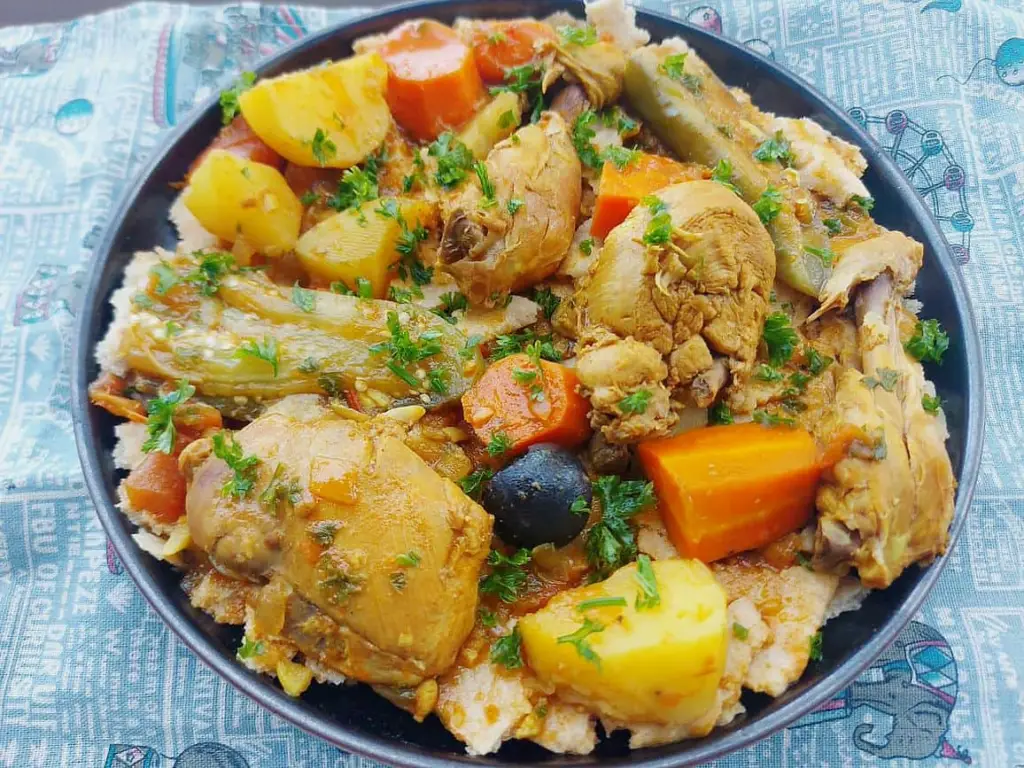
Tashreeb is a traditional Iraqi dish that combines bread soaked in a rich, flavorful stew. The word “Tashreeb” originates from the Arabic word “Sharab” which means “to drink”, emphasizing the soaking of bread in the broth. This dish is particularly popular during the colder months, as it’s warm and hearty.
Background to Tashreeb
Tashreeb is a staple in many Iraqi households. Cooks make it with lamb or chicken, various vegetables, and spices that give it its distinct Middle Eastern flavor.
Over the years, multiple variations of Tashreeb have emerged, depending on the region or family preferences. The essence, however, remains the same: tender meat, aromatic spices, and soaked bread that gives it a unique texture.
Iraqi Cuisine – Tashreeb Ingredients
Meat and Base
- 500g (about 1 lb) lamb or chicken pieces, bone-in preferred for more flavor
- 2 large onions, finely chopped
- 4-5 cloves of garlic, minced
- 4 cups water or chicken broth
- 3-4 stale flatbreads (like Iraqi Samoon or Khubz), torn into pieces
Vegetables:
- 2-3 tomatoes, diced
- 2 carrots, chopped
- 1-2 potatoes, diced
- 1 cup green peas
- 1 bell pepper, chopped (optional)
Spices and Seasonings:
- 1 tsp turmeric powder
- 1 tsp ground cumin
- 1 tsp ground coriander
- 1/2 tsp ground black pepper
- 1/2 tsp ground cinnamon
- 1 bay leaf
- Salt, to taste
- Fresh cilantro or parsley, chopped, for garnish
Iraqi Cuisine – Tashreeb Directions:
Meat Preparation:
- In a large pot, heat some oil over medium heat. Add the chopped onions and sauté until they become translucent.
- Add the minced garlic and sauté for another minute or two.
- Introduce the lamb or chicken pieces to the pot and brown them on all sides.
Spices and Broth:
- Once the meat is brown, sprinkle in all the spices: turmeric, cumin, coriander, black pepper, and cinnamon. Mix well to coat the meat with the spices.
- Pour in the water or chicken broth.
- Add the bay leaf.
- Bring the mixture to a boil, then reduce the heat to low. Cover and let it simmer for about 30-40 minutes (if using lamb, it may require a longer cooking time to become tender).
Adding Vegetables:
- After the meat has simmered and is tender, add the diced tomatoes, carrots, potatoes, green peas, and bell pepper (if using) to the pot.
- Cover and continue to simmer for another 20-25 minutes, or you can check if the vegetables are ready.
Introducing the Bread:
- Once the vegetables are tender, add the torn pieces of stale flatbread to the pot. Push them down so they submerge in the broth.
- Let the bread soak up the broth and cook for another 10-15 minutes on low heat. The bread should become soft and integrate into the stew, giving Tashreeb its characteristic texture.
Garnishing and Serving:
- Before serving, check for seasoning and adjust salt or spices as needed.
- Garnish with freshly chopped cilantro or parsley.
- Serve the Tashreeb hot in bowls, ensuring each serving gets a good mix of meat, vegetables, and soaked bread.
Tashreeb is a comforting dish, reminiscent of the rich culinary heritage of Iraq. Its blend of spices, meat, and bread offers a heartwarming experience that’s perfect for family gatherings or cold evenings. Enjoy your meal!
Iraqi Cuisine – Dolma
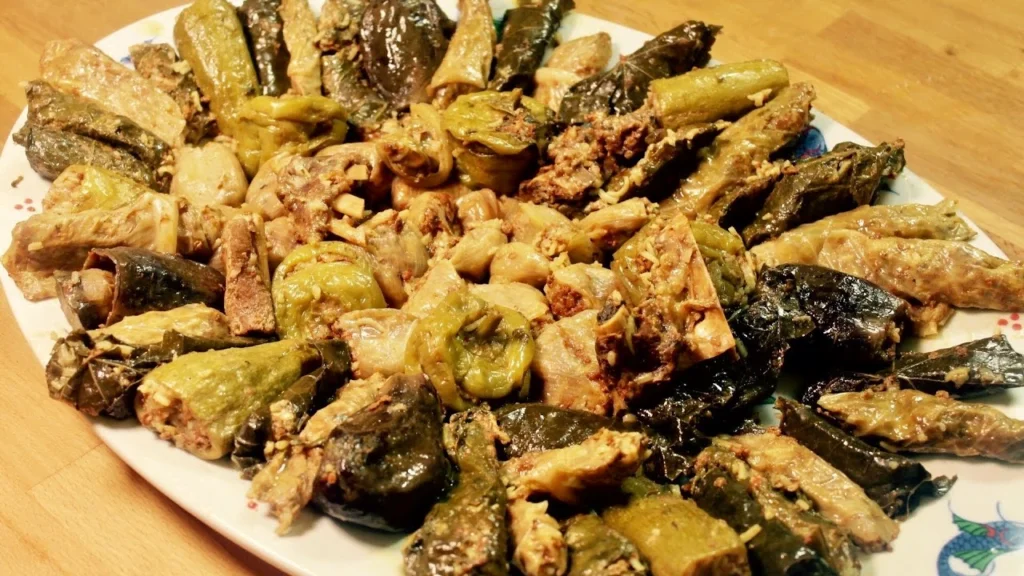
Dolma, sometimes referred to as Dolmades in other parts of the Middle East and the Mediterranean, is a cherished dish in Iraqi cuisine. In Iraq, the term “dolma” encompasses a variety of stuffed vegetables, not just grape leaves. Chefs hollow out Vegetables like peppers, tomatoes, onions, and zucchinis and fill them with a mixture of rice and meat, then cooked in a rich tomato and tamarind sauce.
Background to Dolma
The word “dolma” derives from the Turkish word “dolmak,” meaning “to be filled.” The dish traces its origins to the former Ottoman Empire and its influence.
This spread the love for stuffed vegetables and leaves across its vast territories, leading to numerous variations in the Middle East, the Balkans, and the Caucasus. In Iraq, dolma is a favorite, especially for gatherings, as it represents the essence of communal cooking and eating.
Iraqi Cuisine – Dolma Ingredients
Vegetables:
- Grape leaves (about 30-40, fresh or jarred)
- 2-3 bell peppers
- 2-3 tomatoes
- 2-3 zucchinis
- 1-2 eggplants
- 2-3 onions (optional)
Filling:
- 1 cup short-grain rice, rinsed and drained
- 300g (about 2/3 lb) ground beef or lamb
- 1 tsp ground cumin
- 1 tsp ground allspice
- 1/2 tsp ground black pepper
- 1/4 tsp ground cinnamon
- Salt to taste
- 2-3 cloves garlic, minced
- 2 tbsp tomato paste
- 1/4 cup fresh parsley, chopped
- 2 tbsp lemon juice
Cooking Sauce:
- 2 cups beef or chicken broth
- 2 tbsp tomato paste
- 2 tbsp tamarind concentrate or pomegranate molasses
- Salt and pepper to taste
- 2 tbsp olive oil or melted ghee
Iraqi Cuisine – Dolma Directions:
Prepare the Vegetables
- If using grape leaves from a jar, rinse them under cold water and set aside to drain. Fresh leaves should be blanched in boiling water for a couple of minutes until tender.
- For bell peppers: cut off the tops and remove the seeds.
- For tomatoes: cut off the tops and hollow them out.
- For zucchinis and eggplants: slice off the top and carefully hollow out using a corer, leaving a shell about 1/4-inch thick.
- For onions (if using): blanch whole onions in boiling water for a few minutes until they soften, then separate the layers to use for wrapping.
Prepare the Filling
- In a large mixing bowl, combine the rice, ground meat, spices, garlic, tomato paste, parsley, and lemon juice. Mix everything together until well combined.
Stuff the Vegetables
- Fill each vegetable with the rice and meat mixture, pressing down gently but ensuring they’re not too tightly packed (as the rice will expand while cooking).
- For grape leaves or onion layers: Place a spoonful of the filling in the center, fold in the sides, and roll them up.
Cooking the Dolma
- In a large pot, whisk together the broth, tomato paste, tamarind concentrate (or pomegranate molasses), salt, and pepper.
- Arrange the stuffed vegetables and rolls in the pot, seam side down for the grape leaves. They should be snug but not overly tight.
- Drizzle the olive oil or melted ghee over the top.
- Place a heavy plate or a flat lid on top of the dolma to keep them in place during cooking.
- Cover the pot and simmer on low heat for about 45 minutes to an hour, or until the rice is fully cooked and the vegetables are tender.
Serving
- Once cooked, carefully remove the dolma from the pot using tongs, and arrange them on a serving platter.
- Drizzle some of the cooking sauce over the top or serve it on the side.
Dolma is a beautiful representation of Iraqi cuisine’s depth and flavor. It’s a dish that requires time and patience but offers a rewarding taste that resonates with love and tradition. Enjoy your meal!
Iraqi Cuisine – Kubba
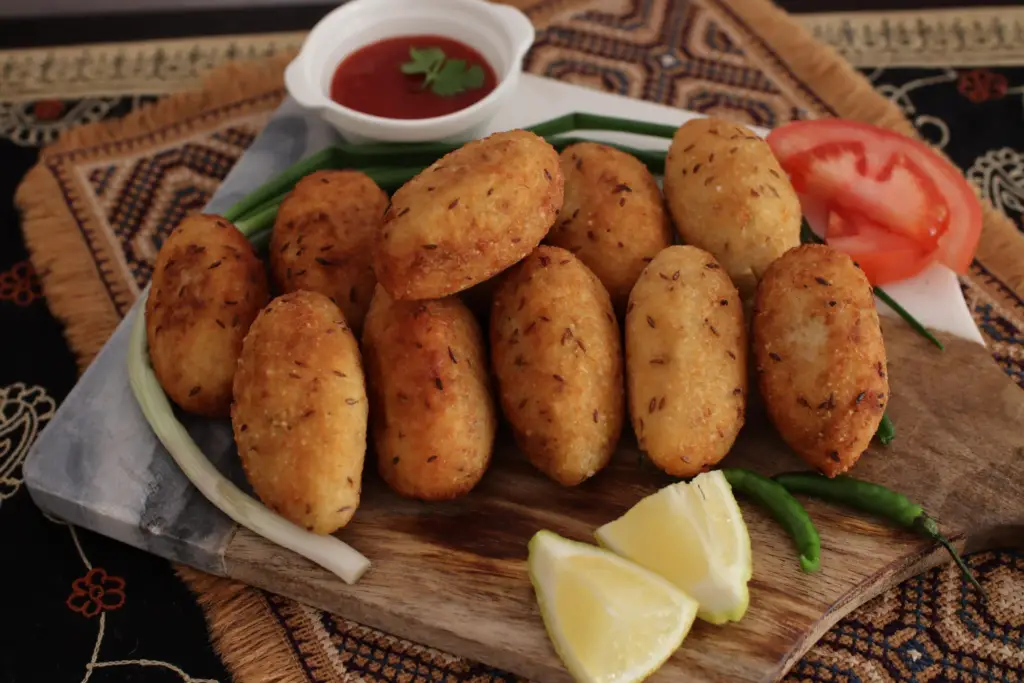
Kubba (also spelled kibbeh, kubbeh, and various other ways depending on the region) is a beloved dish in Middle Eastern cuisine, especially prominent in Iraq. Essentially, kubba refers to dishes made with bulgur wheat and finely ground meat, seasoned with various spices.
There are numerous variations of kubba throughout Iraq and the broader Middle East, including raw kubba, pan-fried, boiled, and baked versions.
One of the most popular variations in Iraq is Kubba Halab, which originates from the city of Mosul. These are rice-based kubbas that are deep-fried and have a meat filling.
Background to Kubba
Kubba has deep historical roots in the Middle East, with variations of it having been enjoyed for centuries. In Iraq, kubba is often associated with celebrations, family gatherings, and feasts.
Each region and family might have its own special way of preparing the dish, with subtle variations in ingredients and cooking methods.
Iraqi Cuisines – Kubba Halab (Mosul-Style Kubba) Recipe:
Iraqi Cuisines – Kubba Halab Ingredients:
Outer Shell:
- 2 cups short-grain rice
- 500g (about 1 lb) very finely ground beef or lamb
- 1 teaspoon turmeric (for color)
- Salt to taste
- Water for soaking
Filling:
- 300g (about 2/3 lb) ground beef or lamb
- 1 large onion, finely chopped
- 2 teaspoons ground allspice
- 1/2 teaspoon ground black pepper
- 1/2 teaspoon ground cinnamon
- 1/4 cup pine nuts or slivered almonds (optional)
- Salt to taste
- Oil for sautéing
Cooking:
- Oil for deep frying
Iraqi Cuisine – Kubba Directions:
The Rice for the Outer Shell:
- Wash the rice several times until the water runs clear. Soak it in fresh water for about 3-4 hours or overnight.
Filling:
- In a frying pan, heat a bit of oil and sauté the onions until translucent.
- Add the ground meat and cook until browned, breaking apart any lumps.
- Season with allspice, black pepper, cinnamon, and salt. Mix well.
- If using pine nuts or almonds, add them now and sauté for a few more minutes until lightly golden.
- Set the filling aside to cool.
Outer Shell:
- Drain the soaked rice and blend it in a food processor until it becomes a paste. This might require adding a little water to help the blending process.
- Add the finely ground meat, turmeric, and salt to the rice paste and blend until you get a smooth, dough-like consistency.
Forming the Kubba:
- Wet your hands with some water or oil. Take a small amount of the rice and meat dough and form it into a ball.
- Using your thumb, make a hole in the center of the ball and shape it into a hollow shell, rotating with your fingers.
- Fill the hollow with the meat filling and seal the top. Shape it into a slightly elongated form or keep it round, based on preference.
Frying the Kubba:
- In a deep frying pan or pot, heat the oil. Once hot, add the kubba in batches. Do not overcrowd the pan.
- Fry until they’re golden brown and crispy on the outside.
- Remove and place them on paper towels to drain excess oil.
Serving:
- Serve Kubba Halab hot, often accompanied with various dips like tahini sauce, yogurt, or a simple tomato sauce.
Kubba Halab is a testament to the rich and diverse culinary traditions of Iraq. Whether enjoyed as a snack or a main dish, these golden, crispy delights are sure to impress. Enjoy your meal!
Iraqi Cuisine – Masgouf

Masgouf is one of Iraq’s most iconic dishes and is often considered the national dish of the country. This ancient culinary gem originates from the city of Baghdad and has been savored by Iraqis for centuries.
Background to Masgouf
Masgouf is a traditional way of grilling fish, typically carp, near an open fire. It’s usually prepared in a unique method where the fish is split open, marinated, and skewered, allowing it to be slow-cooked by the radiant heat of the flames. This technique gives the fish a smoky flavor while retaining its moisture. Historically, the fish would be caught fresh from the Tigris River, which runs through Baghdad. Though the city has faced many challenges, masgouf restaurants remain a testament to its enduring culture.
Iraqi Cuisine – Masgouf Ingredients:
Fish:
- 1 large carp, scaled, gutted, and split open (you can ask your fishmonger to do this)
Marinade:
- Juice of 2 lemons
- 2 tablespoons olive oil or melted ghee
- 4 cloves garlic, minced
- 1 teaspoon ground turmeric
- Salt and black pepper to taste
For Serving:
- Lemon wedges
- Flatbread (like Iraqi samoon or naan)
- Chopped fresh herbs (parsley, dill, or coriander)
- Sliced tomatoes and onions
Iraqi Cuisine – Masgouf Directions:
Prepare the Fish:
- If the fish isn’t already prepared, start by scaling and gutting it. Then, split it open from the dorsal side, leaving the belly intact.
- Rinse the fish well and pat it dry using paper towels.
Marinating:
- In a bowl, mix together lemon juice, olive oil or ghee, minced garlic, turmeric, salt, and black pepper.
- Generously rub this marinade all over the fish, ensuring it’s well-coated both inside and out.
- Allow the fish to marinate for at least an hour, but preferably 2-3 hours.
Grilling the Fish:
- Prepare your grill. If you’re using charcoal, let it burn down until you have a medium heat, and the coals are covered with white ash. Masgouf is traditionally cooked over a wood fire, which adds to its characteristic flavor.
- Place the fish on the grill, skin-side down, using large skewers or a grill basket to hold it open.
- Grill the fish for about 45 minutes to an hour, turning occasionally. The fish should be a golden brown color and should flake easily with a fork when it’s done. Baste the fish occasionally with any remaining marinade to keep it moist and flavorful.
Serving:
- Once cooked, transfer the fish to a large platter.
- Garnish with fresh herbs, and serve with lemon wedges, flatbread, and sliced tomatoes and onions.
Enjoy your Masgouf with friends and family, as is tradition in Iraq. The process of cooking and the communal nature of the meal make it an experience as much as a dish. Enjoy!
Iraqi Cuisine – Biryani

Biryani is a rice-based dish that’s celebrated across many parts of South Asia and the Middle East. While the dish has its roots in the Indian subcontinent, it traveled and adapted to local tastes, resulting in numerous regional variations. The Iraqi version of biryani is distinct from its South Asian counterpart in terms of flavors and cooking techniques, but it carries the same celebratory and communal spirit.
Background to Iraqi Biryani
Iraqi Biryani is a fragrant and flavorful rice dish that’s typically made with lamb or chicken and a unique blend of spices. It’s often reserved for special occasions and family gatherings. Unlike South Asian versions, which can be quite spicy, the Iraqi variation is milder but deeply aromatic.
Iraqi Cuisine – Biryani Ingredients:
Meat
- 500g (about 1 lb) bone-in chicken pieces or lamb, cut into chunks
Rice:
- 2 cups Basmati rice
- Water for soaking
Spices and Seasonings:
- 2 teaspoons ground turmeric
- 1 teaspoon ground cumin
- 1 teaspoon ground coriander
- 1/2 teaspoon ground cinnamon
- 1/2 teaspoon ground cardamom
- 1/4 teaspoon ground nutmeg
- Salt and black pepper to taste
Vegetables & Fruits:
- 1 large onion, finely sliced
- 3 cloves garlic, minced
- 1 cup mixed vegetables (like carrots, peas, and potatoes), diced
- 1/2 cup raisins
- 1/2 cup slivered almonds or whole blanched almonds
Cooking Liquid:
- 4 cups chicken or beef broth
- 2 tablespoons ghee or vegetable oil
For Garnishing:
- Fresh chopped cilantro or parsley
Iraqi Cuisine – Biryani Directions
- Soak the Basmati rice in cold water for about 30 minutes. This helps to remove the excess starch and ensures the rice grains remain separate after cooking.
Cooking the Meat:
- In a large pot, heat the ghee or oil. Add the sliced onions and fry until they’re translucent and slightly golden.
- Add the chicken or lamb pieces and brown them on all sides.
- Stir in the garlic and sauté for a couple of minutes.
Adding Spices & Vegetables:
- Mix in the ground spices (turmeric, cumin, coriander, cinnamon, cardamom, and nutmeg). Sauté for a couple of minutes until fragrant.
- Add the mixed vegetables and stir well, ensuring they’re coated with the spices.
- Add the raisins and almonds. Mix well.
Cooking the Rice:
- Drain the soaked rice and add it to the pot. Stir gently to mix with the meat and spices.
- Pour in the chicken or beef broth, ensuring it covers the rice mixture.
- Season with salt and black pepper. Give it a gentle stir and bring the mixture to a boil.
- Once boiling, reduce the heat to low, cover the pot with a tight-fitting lid, and let it simmer for 20-25 minutes. The rice should be cooked and all the liquid absorbed.
Serving:
- Fluff the rice with a fork to separate the grains.
- Transfer the biryani to a serving dish and garnish with fresh chopped cilantro or parsley.
- Serve hot with yogurt or a side salad.
Iraqi Biryani stands out for its unique blend of flavors and aromatics. Enjoy this dish on its own or as a part of a larger Iraqi feast!
These are just a few examples of the amazing traditional Iraqi dishes that you can savor. Don’t be afraid to try something new and experience the unique flavors of Iraqi cuisine for yourself!
Iraqi Cuisine – Umm Ali

Umm Ali is a popular dessert in Iraq, and its name means “Ali’s mother.” It is a creamy bread pudding that is sprinkled with nuts and raisins and is perfect for satisfying your sweet tooth. To make Umm Ali, you will need the following ingredients:
- 500g puff pastry
- 1 liter of milk
- 1 cup of heavy cream
- 1/2 cup of sugar
- 1/4 cup of almonds, chopped
- 1/4 cup of pistachios, chopped
- 1/4 cup of raisins
- 1 teaspoon of vanilla extract
Start by preheating your oven to 400°F. In a saucepan over medium heat, add the milk, cream, and sugar, and bring to a boil. Remove from heat and add the vanilla extract.
Cut the puff pastry into small squares and place them in a baking dish. Pour the milk and cream mixture over the pastry squares, and sprinkle the chopped nuts and raisins on top.
Bake for 20-25 minutes or until the pastry is golden brown. Serve hot or cold.
Iraqi Cuisine – Baklava
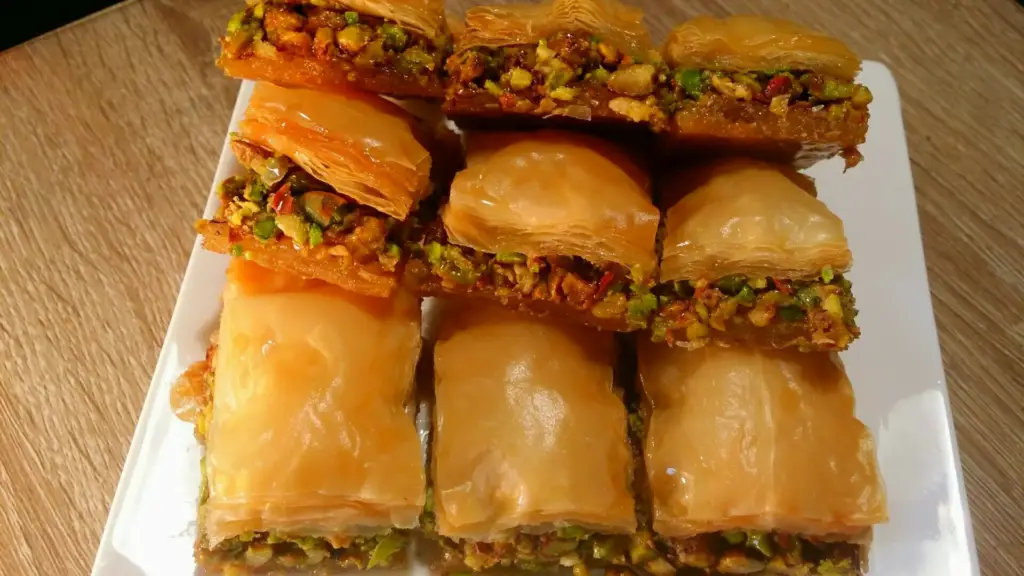
Baklava is a sweet pastry that is made with layers of filo pastry, chopped nuts, and honey syrup. It is a popular dessert in Iraq, and its rich and fragrant flavors are sure to leave you wanting more. Here’s what you’ll need to make Baklava:
- 1 pound of filo pastry
- 1 1/2 cups of chopped walnuts
- 1 1/2 cups of chopped pistachios
- 1 cup of butter, melted
- 1 cup of honey
- 1 cup of water
- 1 tablespoon of lemon juice
Preheat your oven to 350°F. Grease a baking dish with butter.
In a mixing bowl, combine the chopped nuts and set aside.
Lay one sheet of filo pastry in the prepared baking dish and brush it with melted butter. Repeat with six more layers of filo pastry, brushing each layer with melted butter.
Sprinkle a layer of the chopped nuts over the filo pastry and cover with another layer of filo pastry. Repeat this process until all the nuts are used up, ending with a layer of filo pastry. Brush the top layer with melted butter.
Using a sharp knife, cut the baklava into small squares or diamonds. Bake for 35-40 minutes or until golden brown.
While the baklava is baking, make the honey syrup by combining the honey, water, and lemon juice in a saucepan over medium heat. Bring to a boil and simmer for 10 minutes or until the syrup thickens.
When the baklava is done, remove it from the oven and pour the syrup over it while it’s still hot. Allow the baklava to cool before serving.
These are just a few of the many delightful Iraqi dessert recipes out there. Try them out and experience the sweetness of Iraqi cuisine.
Conclusion
Iraqi cuisine is more than just a collection of delicious dishes; it’s a vibrant tapestry woven from ancient traditions, diverse cultures, and the unique threads of climate and geography. Every bite whispers stories of resilience, hospitality, and a deep connection to the land. From the hearty stews of the north to the seafood specialties of the south, each region adds its own flavor to the national pot.
So, the next time you savor a steaming plate of “masgouf” or sink your teeth into a juicy “kibbeh,” remember – you’re not just enjoying a meal. You’re embarking on a culinary journey through millennia, experiencing the rich cultural heritage and vibrant spirit of Iraq, one delicious bite at a time.
FAQ
What is Iraqi cuisine?
Iraqi cuisine refers to the traditional dishes and recipes originating from Iraq, a country located in the Middle East. It is known for its rich flavors, aromatic spices, and unique combinations of ingredients.
What are the characteristics of the Cuisine of Iraq?
The cuisine of Iraq is known for its rich flavors and diverse influences. Traditional dishes like kebabs, dolma, and biryani showcase the country’s love for aromatic spices and grilled meats. Iraqi cuisine also includes unique specialties like masgouf, a grilled fish dish, and kubbah, a type of meatball.
What is the Iraqi National Dish?
Kebab Masgouf is a popular Iraqi national dish. It is a grilled fish dish, usually made with freshwater fish like carp or catfish.
The fish is marinated in a mixture of spices, then grilled over an open flame. Kebab Masgouf is often served with rice and a tangy tomato sauce.
What are some popular traditional Iraqi food dishes?
Some popular traditional Iraqi dishes include Tashreeb, a soup with bread and meat; Dolma, stuffed vegetables with rice and herbs; and Masgouf, a grilled fish often served with rice and vegetables.
What are some traditional Iraqi spices?
Traditional Iraqi spices include baharat, a fragrant blend of spices; sumac, a tangy spice made from dried berries; and turmeric, a bright yellow spice with a mild flavor.
Can I prepare Iraqi food dishes at home?
Absolutely! We provide recipes and guides on how to prepare traditional Iraqi dishes in your own kitchen. With the right ingredients and techniques, you can experience the authentic flavors of Iraq right at home.
What are some traditional Iraqi desserts?
Traditional Iraqi desserts include Umm Ali, a bread pudding sprinkled with nuts and raisins; Baklava, a sweet pastry with layers of filo dough and nuts; and Kleicha, a date-filled cookie often enjoyed during festive occasions.

